October 6, 2019
Martha O'Kennon
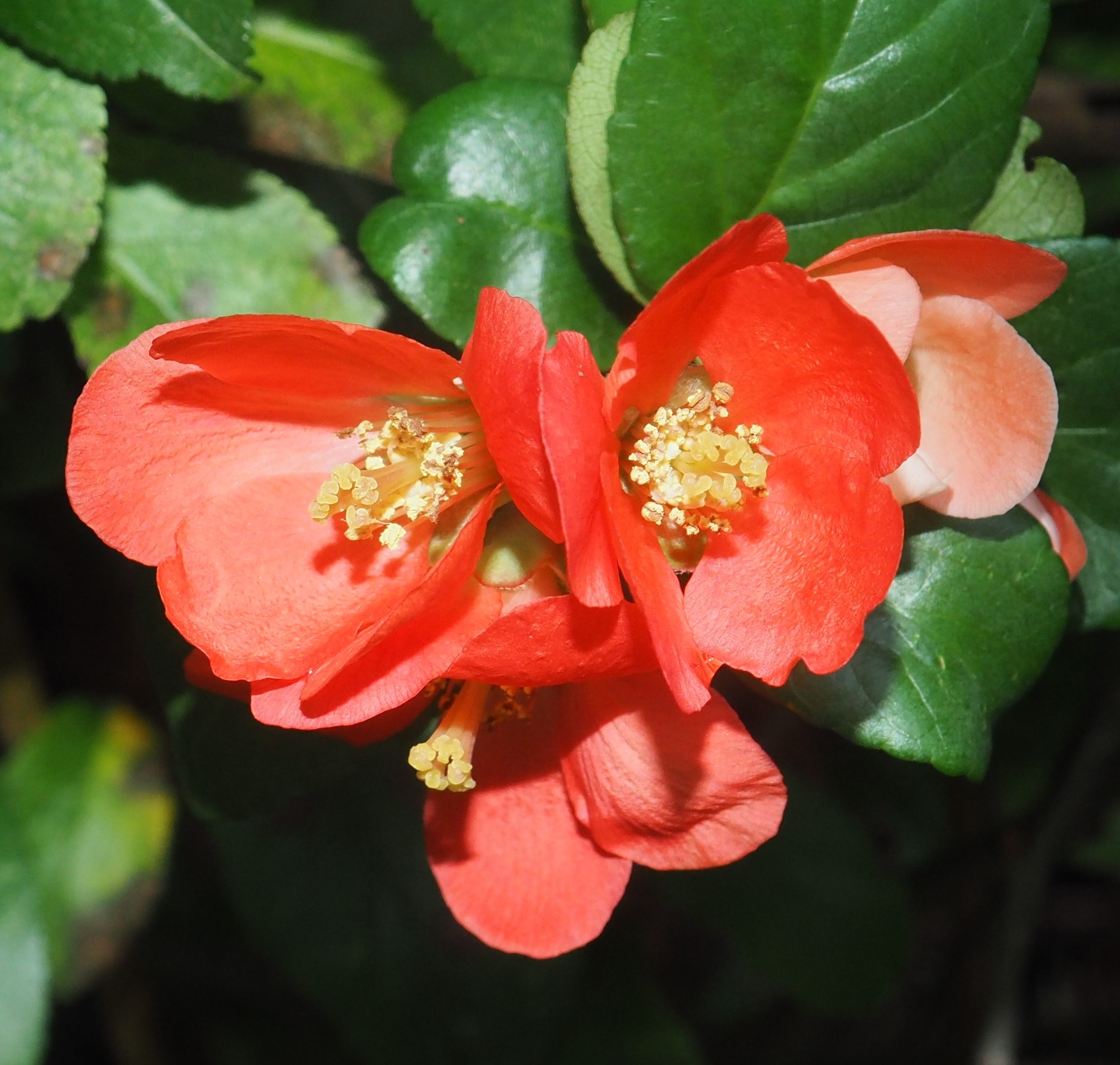
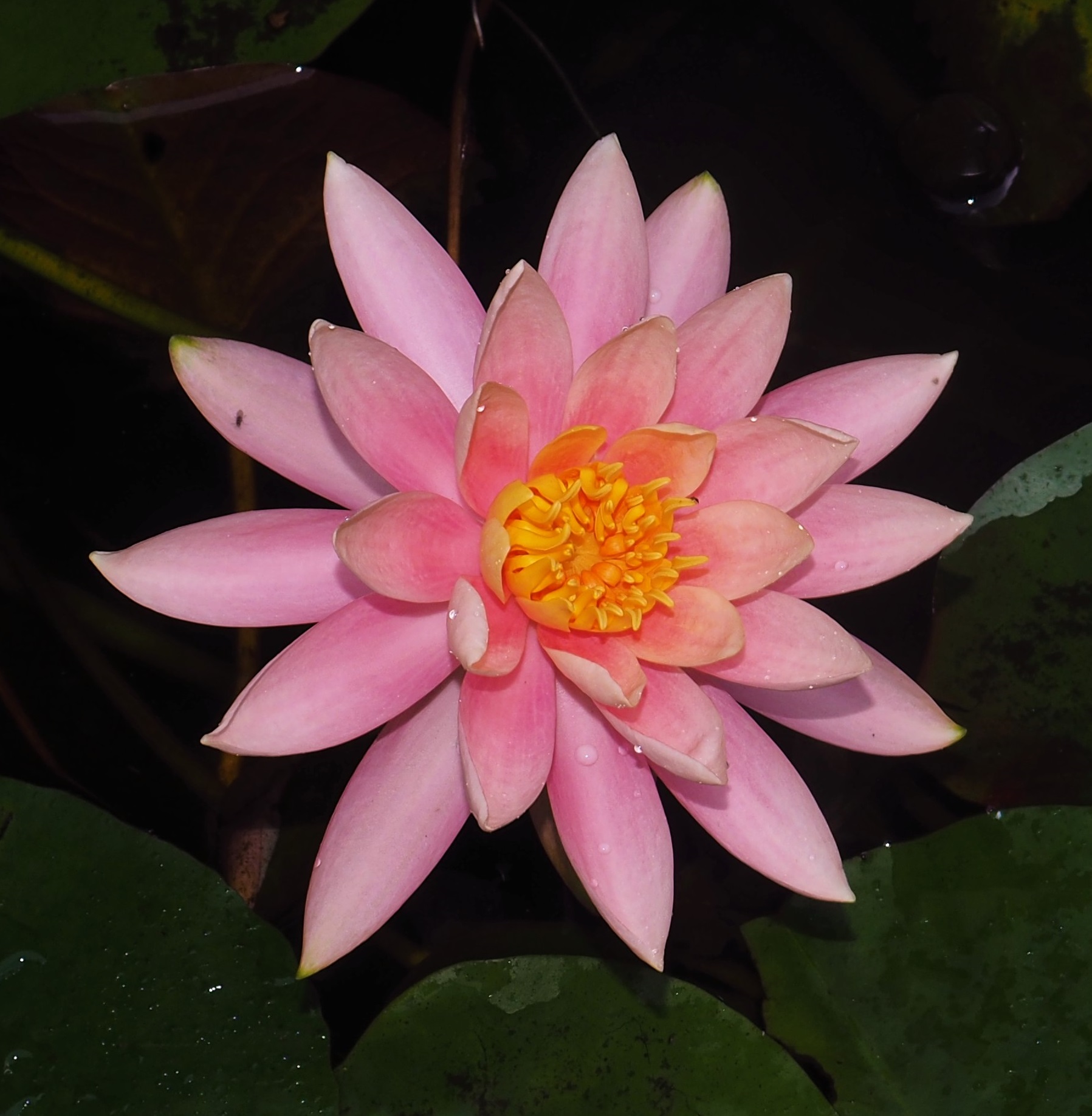

They say about Michigan, if you don't like the weather, wait a few minutes. It has see-sawed between hot and humid and chilly and rainy. Yesterday the AC was still on but I turned it to heat. Here we see a surprising spot rebloom of the ancient Japonica bush; a Pink Water Lily; and another colorful display, some Galls on the Oak sapling by the north deck stairs.
Remember that there is information in the name of the file for each image. You can see it by mousing over the image - look at the lower left of the screen. Or you can click on the image to get to the (usually) larger image. Then the info is displayed in the address line above. Sometimes the second click will actually display a different view of the original image.
The ants are far less obvious than before. This is one of the many types of Carpenter Ants. Except for a few Small Honey Ants running around on top of various tree saplings, that was about it. But we had an interesting story of an Aphid that I found on the shop siding. I submitted it to iNat as a "psyllid", but Chris Mallory (I mentioned this part last week) replied that it was actually an Aphid. Then @glmory suggested a Tribe identification (Panaphidini). I went to the photos for that tribe and eventually found one from Denmark that looked like mine. It was called Lime Leaf Aphid. So I looked at the map of sightings by that name, and saw a few from the US and Canada. One from Halifax, Nova Scotia was particularly interesting because a person called @benarmstrong mentioned that Halifax had planted a lot of Tilia cordata, one of the host plants for this aphid, and so changed the ID to Lime Leaf Aphid (Eucallipterus tiliae). So I emailed Dan Skean, a botanist from Albion College who had created a map of the trees of Albion, asking if Albion had any Tilia cordata. He surprised me by saying that the College had in fact planted a few next to the Science Center, a quick walk from my house.
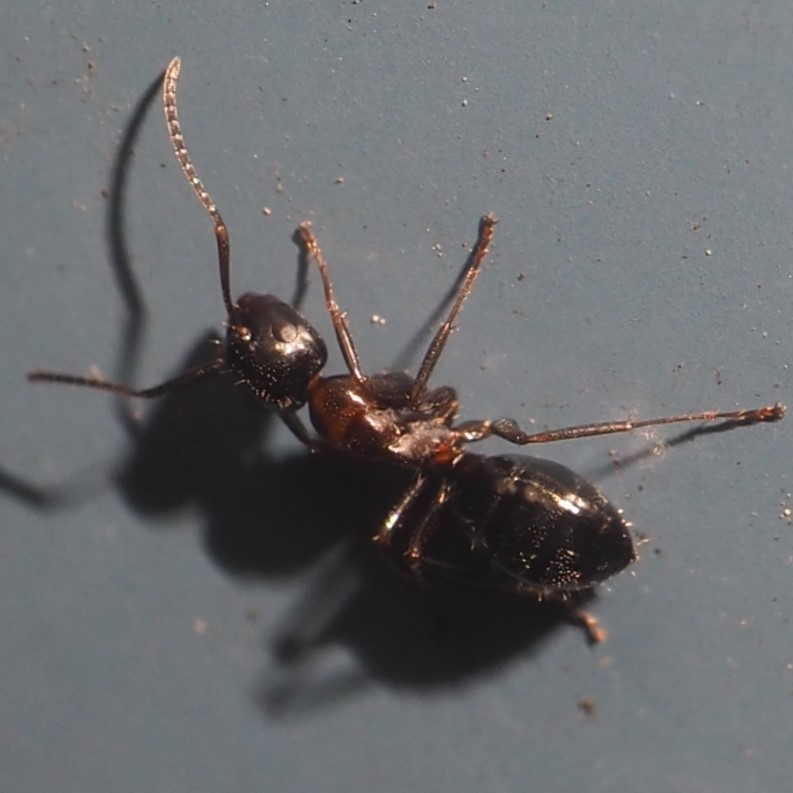
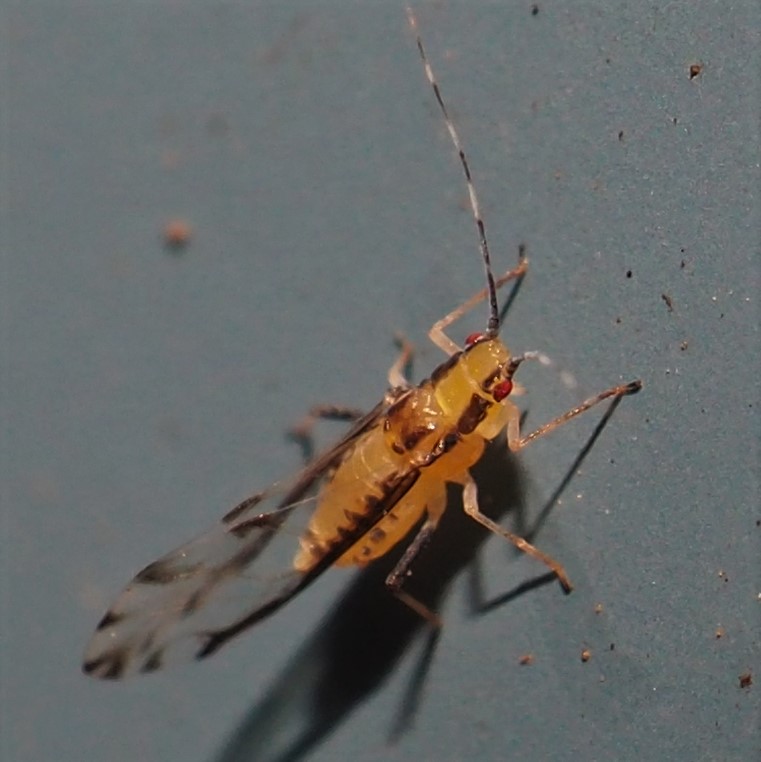
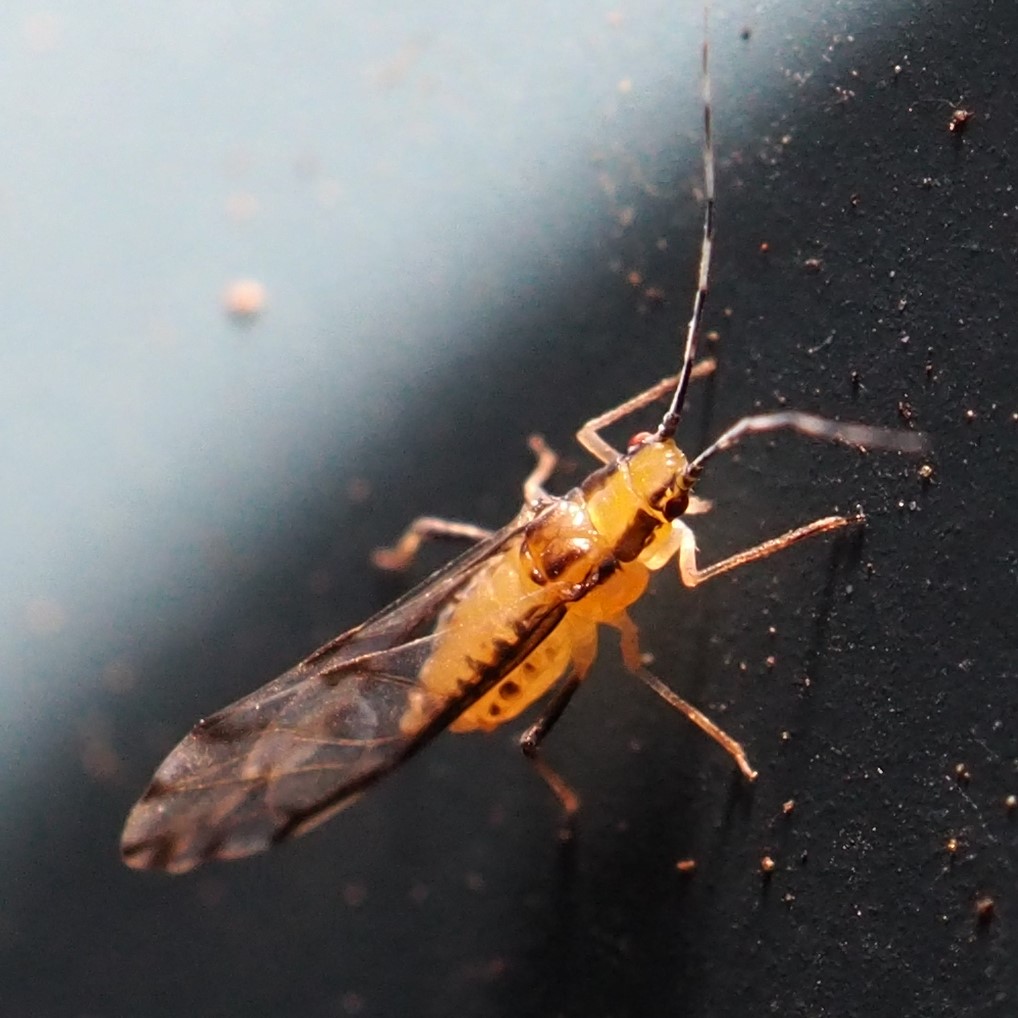
Meanwhile I found on the shop siding a couple of little nymphs that were the right colors (yellow with a little black) to be a young Aphid like the above. I was particularly interested in finding one of the trees that Dan had mentioned. I wanted to see if I could find any adults or nymphs like the ones in my yard. Last night I walked over there to look for the tree. I'd never heard of that tree before so consulted the picture of it on iNat's picture of T. cordata. There was a large tree between the entrances to Palenske and Norris. Almost as soon as I grasped a few leaves, I saw a tiny thing that looked like my nymphs! So these insects would have had a VERY small trip to reach my yard. Afterthought: Well, maybe the nymph isn't right. The fact that the Nymph was on the tree that hosts the Aphid isn't quite enough to decide it is the nymph of that Aphid. I'll go back and look for the adult Aphid.
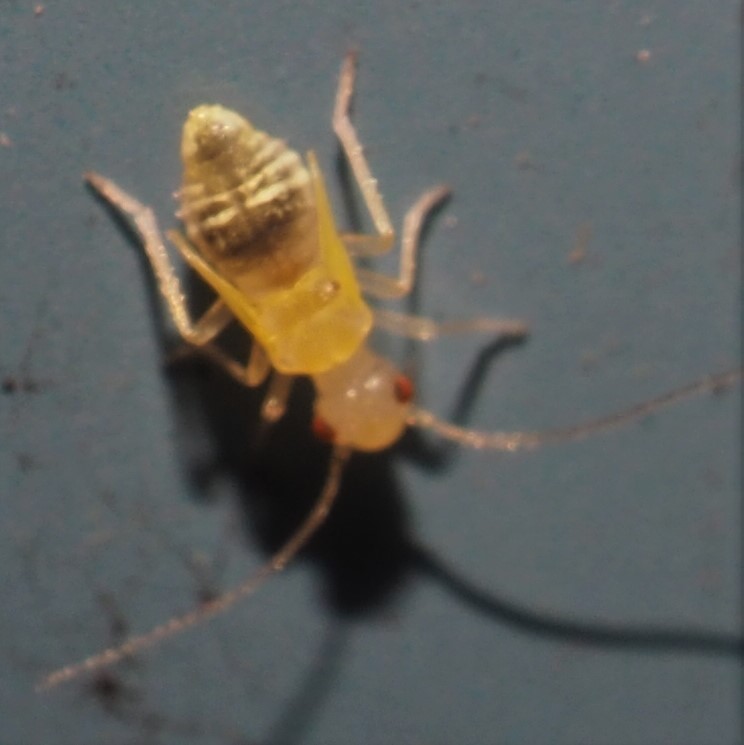


The barklice were represented about the same as in recent weeks, but the Graphopsocus cruciatus Barklouse (pictures 1 and 2) was a bit more frequent. (Last week was the first time I'd seen it in quite a while.) Third is probably Trichadenotecnum alexanderae.
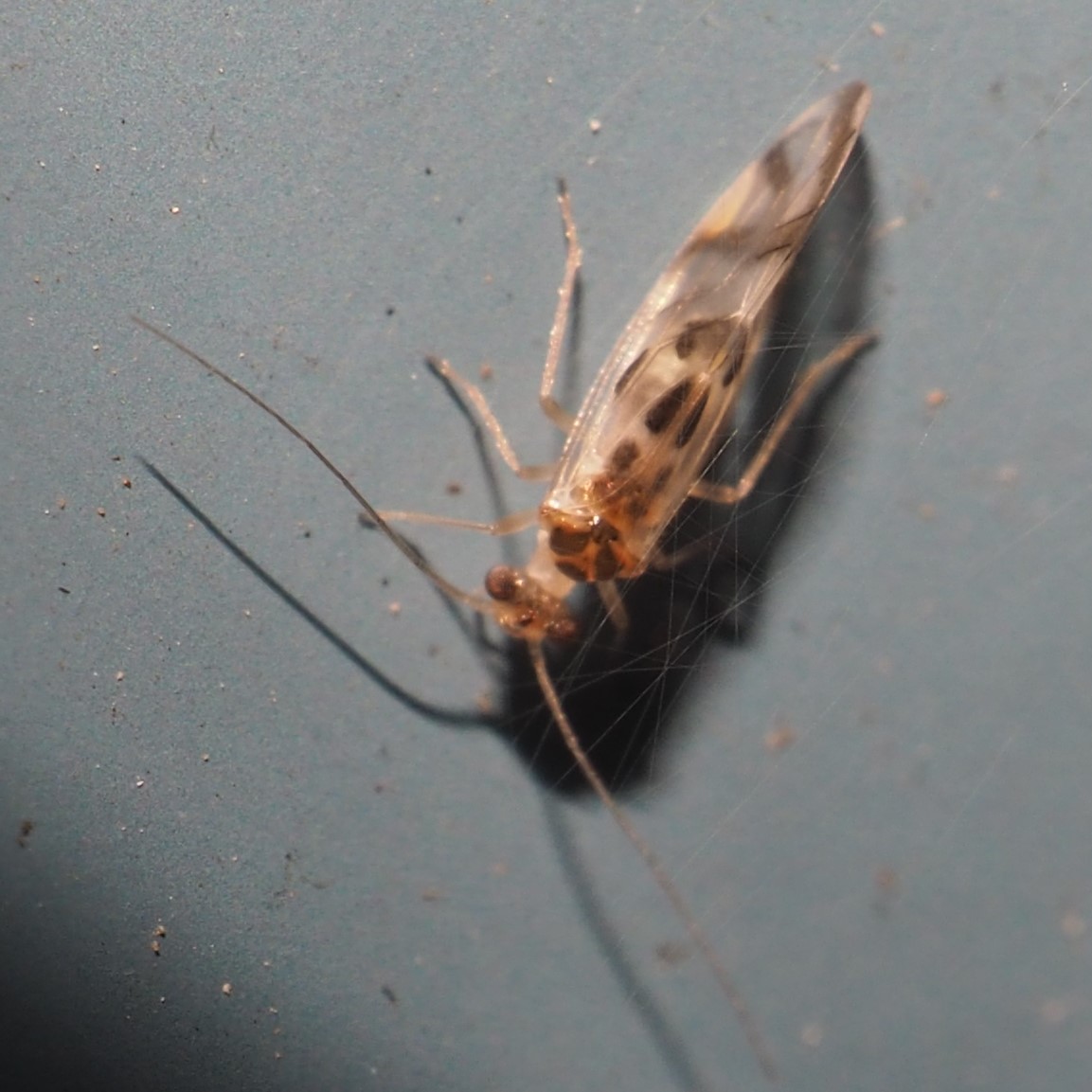
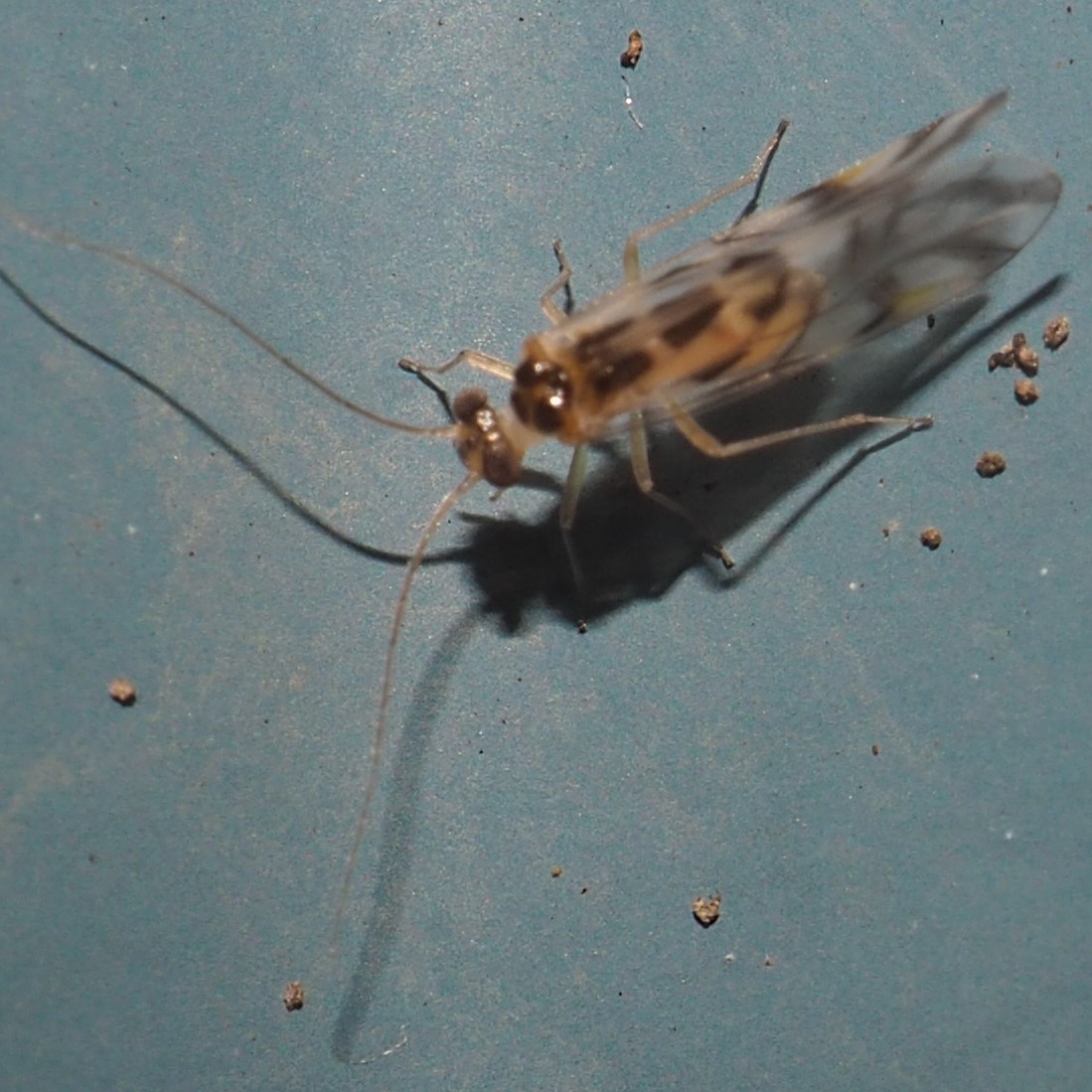
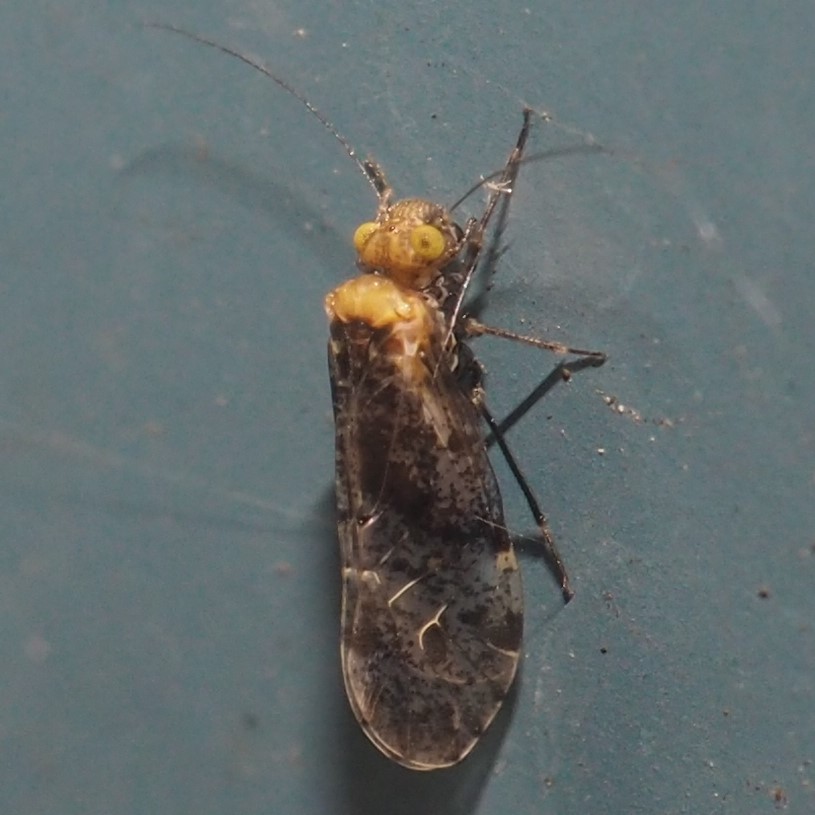
First is our old friend Polypsocus corruptus, which has been seen almost every day for a long time now. Next is the Scaly-winged Barklouse Echmepteryx hageni. Last is a mystery probable Barklouse. Our oldest friend Metyphylorus novae-scotiae went missing this week. Maybe next week!
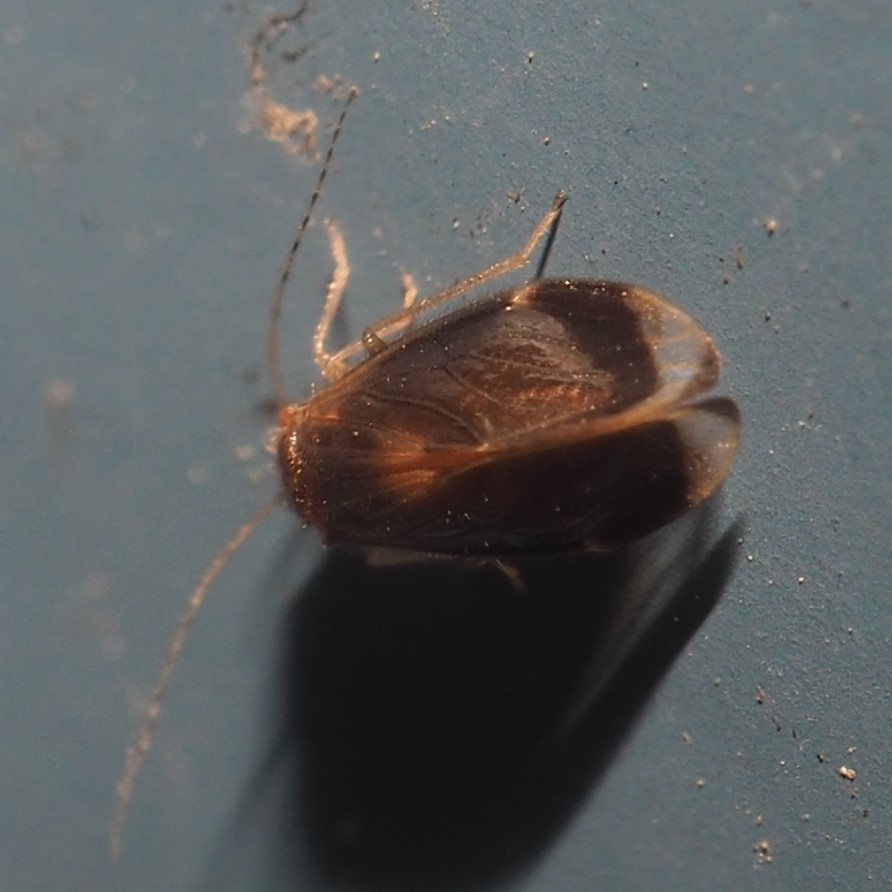
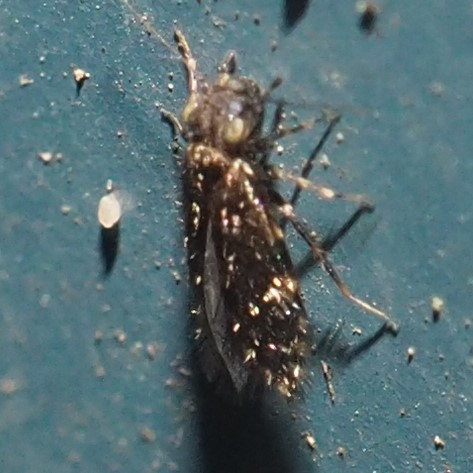
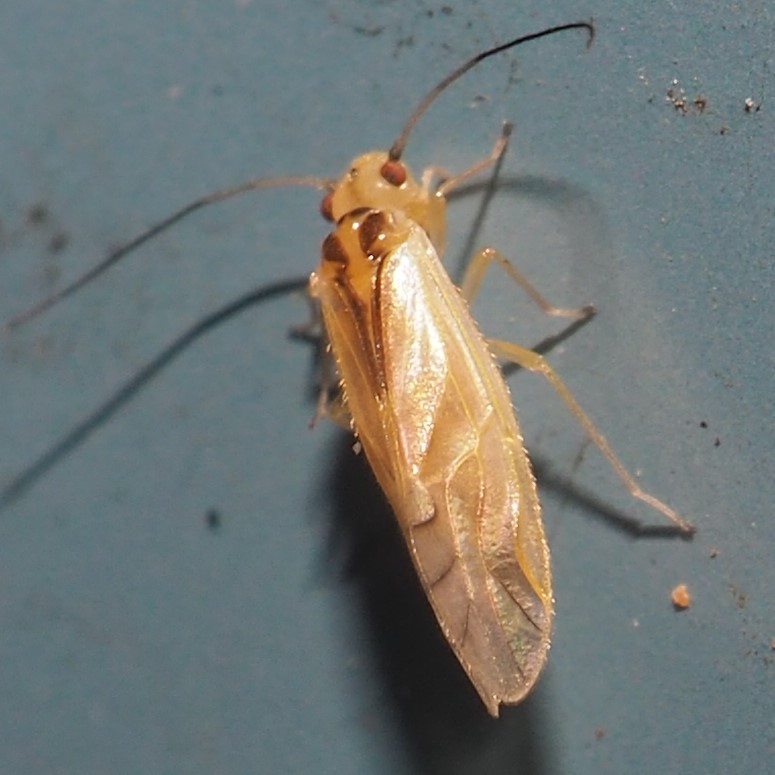
Every time it gets a bit warmer and sunnier, out come the bees. Sadly, they have logged fewer and fewer days of appearance. Here is a lovely Honey Bee. Next and last, one of the green bees with the striped abdomen. It looks as if it was made of crushed velvet.
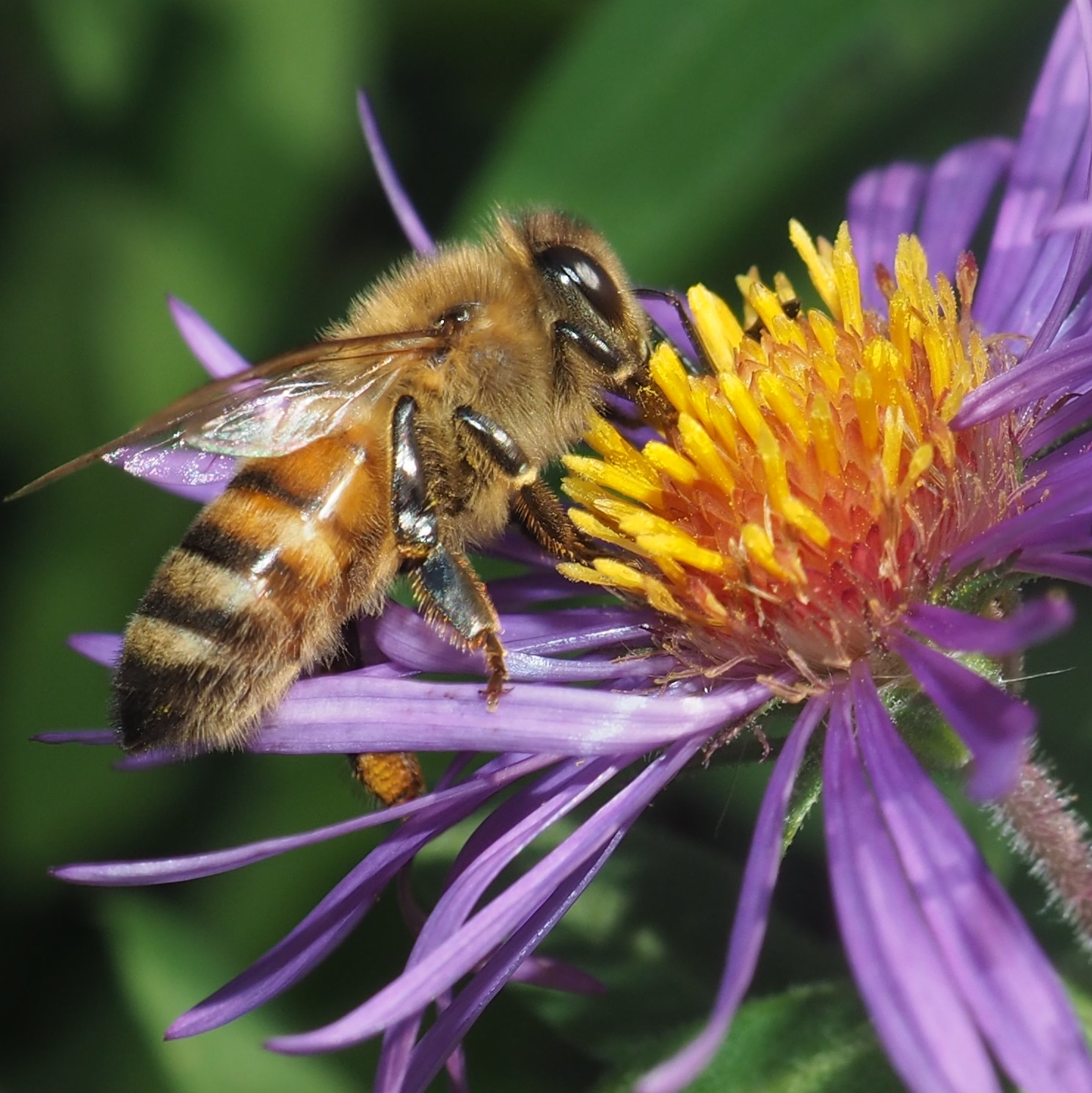
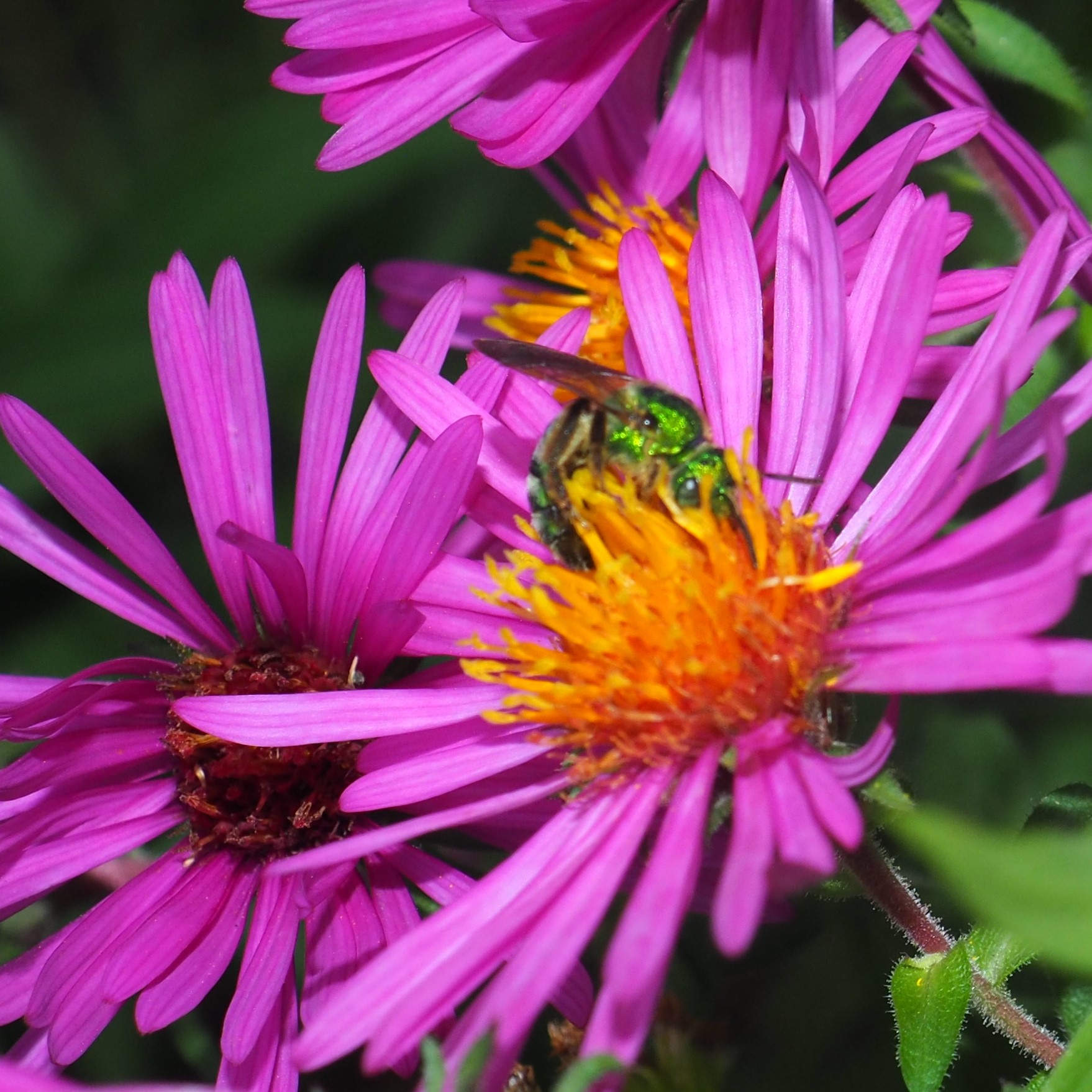
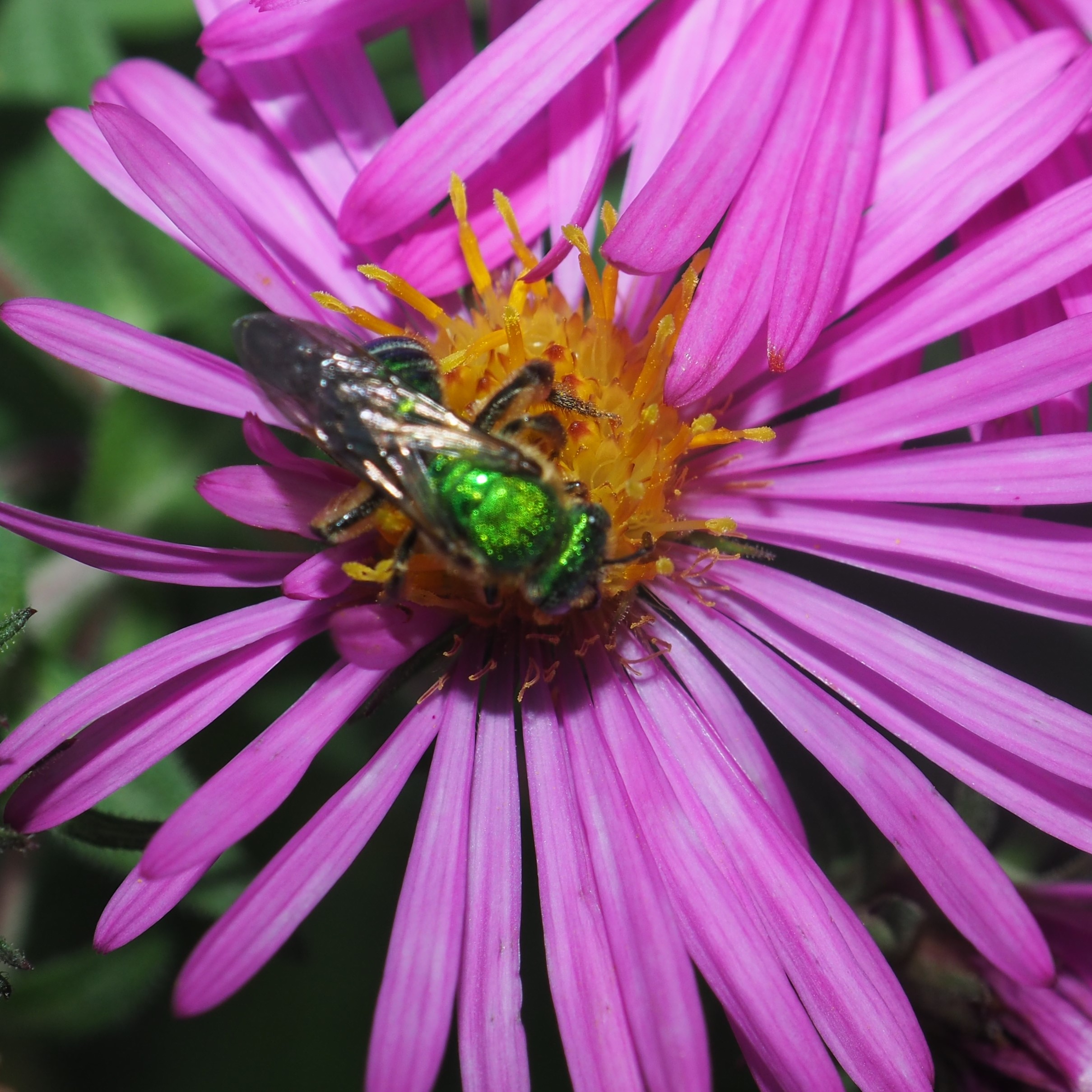
This bee is probably of the genus Lasioglossum, and is one of the most common bees in my yard. Last is one of the struggling little Bumble Bees on a not very warm morning in a fading Aster. Last was on a warmer day. That was it for the Bees!
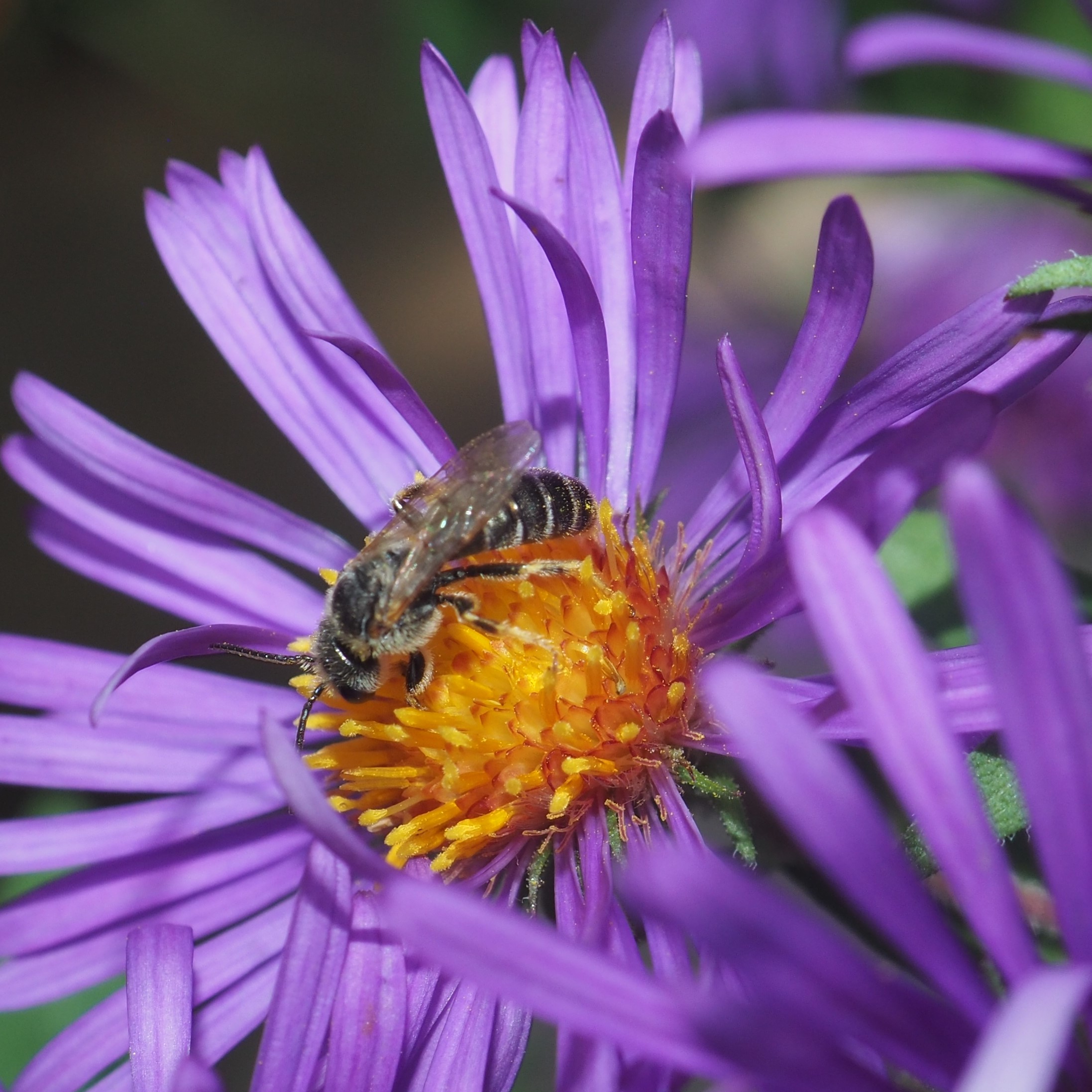
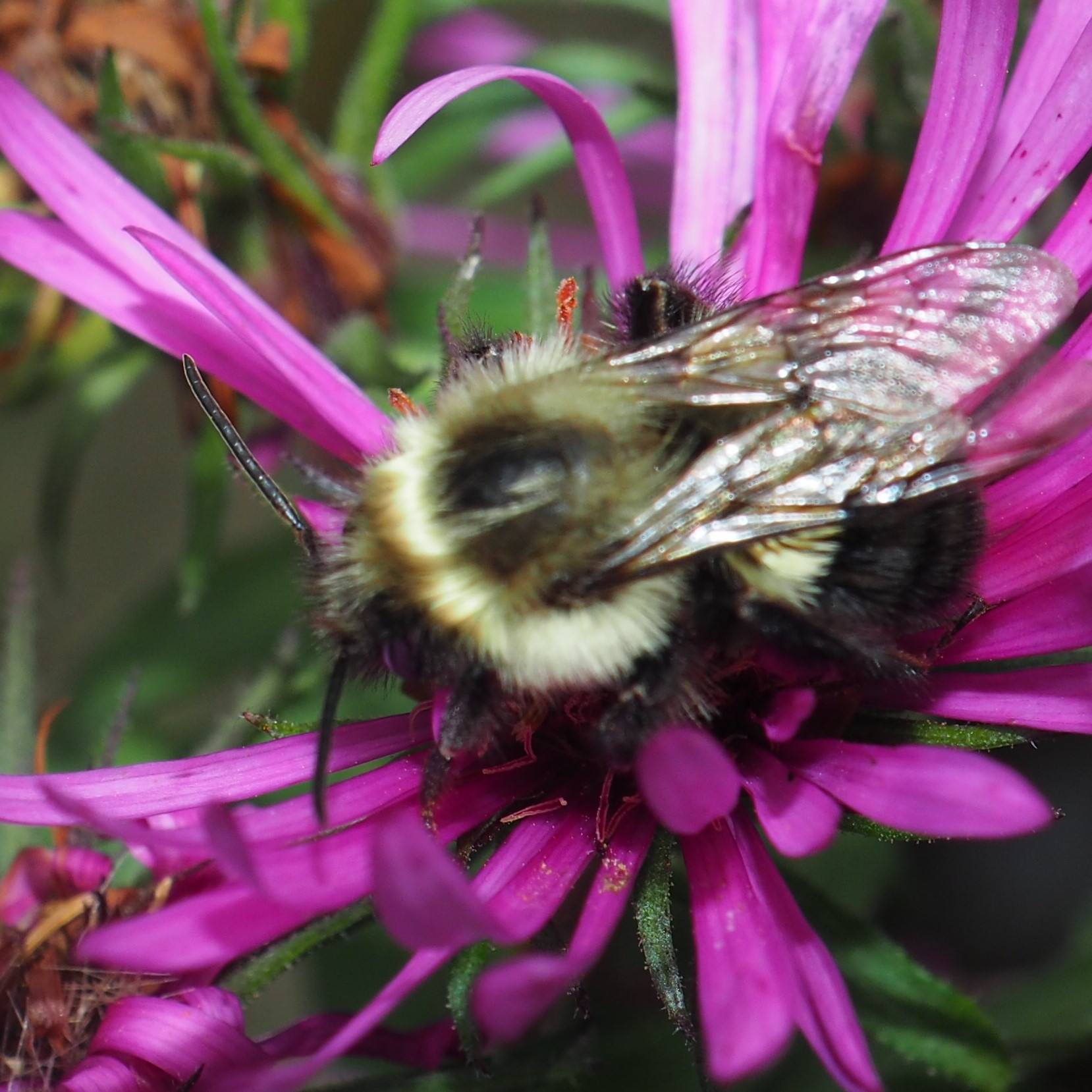
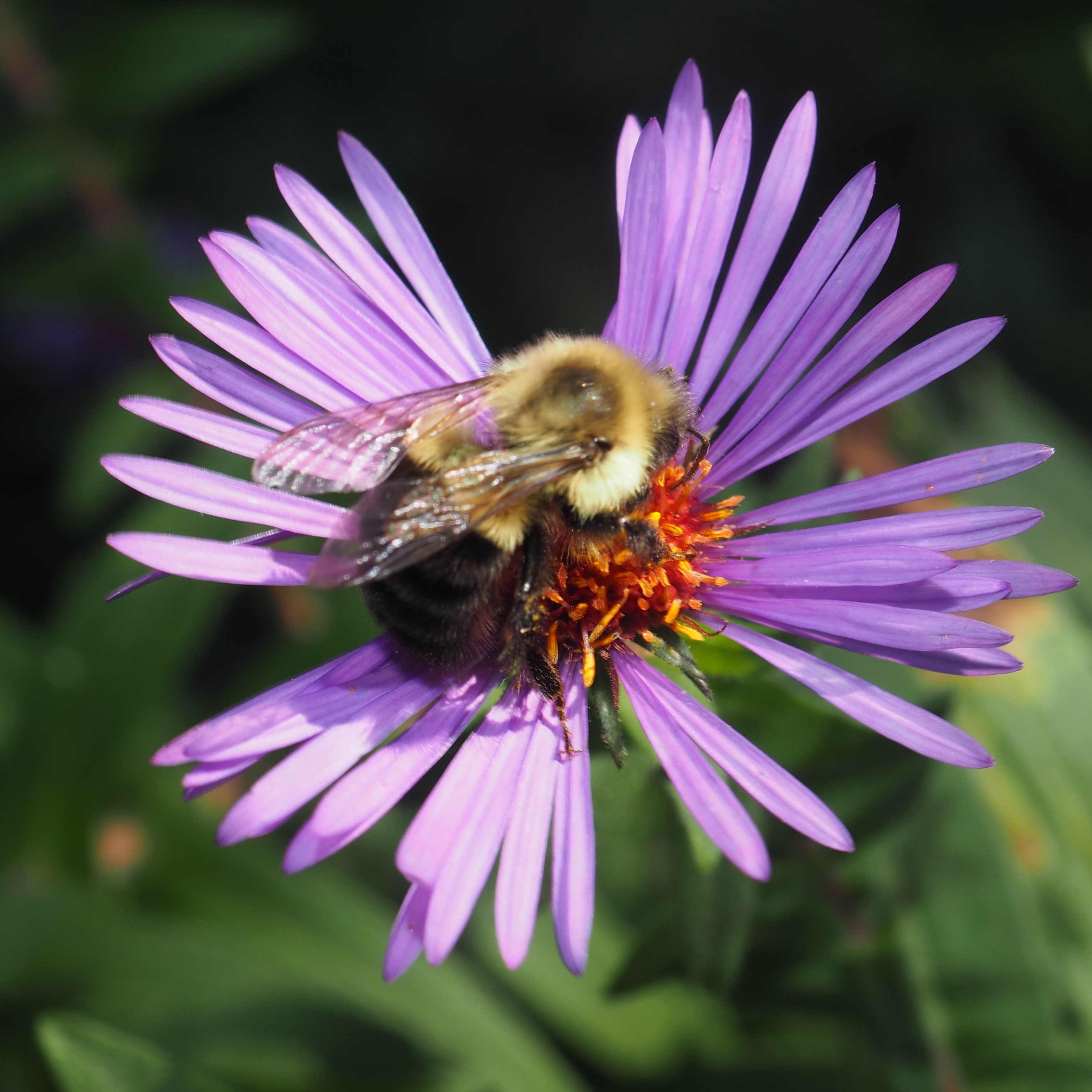
So we are up to the Beetles. Here is most likely a very large picture of a very small beetle, on of the Flea Beetles. Next is a Beetle we have surely seen before but never identified. It does seem to have short hard wings, so is probably a Rove Beetle. Third is a very funny picture. I was aiming at a Spotted Cucumber Beetle on the still-golden end of a twig of Goldenrod. I don't know how my camera got this special effect - I take no credit!
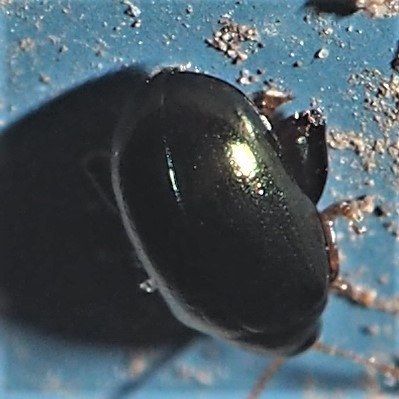


This beetle is one that I almost only see in the context of a Spider's lunch. This one MAY be entangled in a web but I can't see the filaments. Still it is a favorite of the Common House Spiders, which are the most visible Spiders right now. Second is a side view of a Redbud Bruchid. Last is the larva of an Asian Lady Beetle, happy in the company of a few Whiteflies.
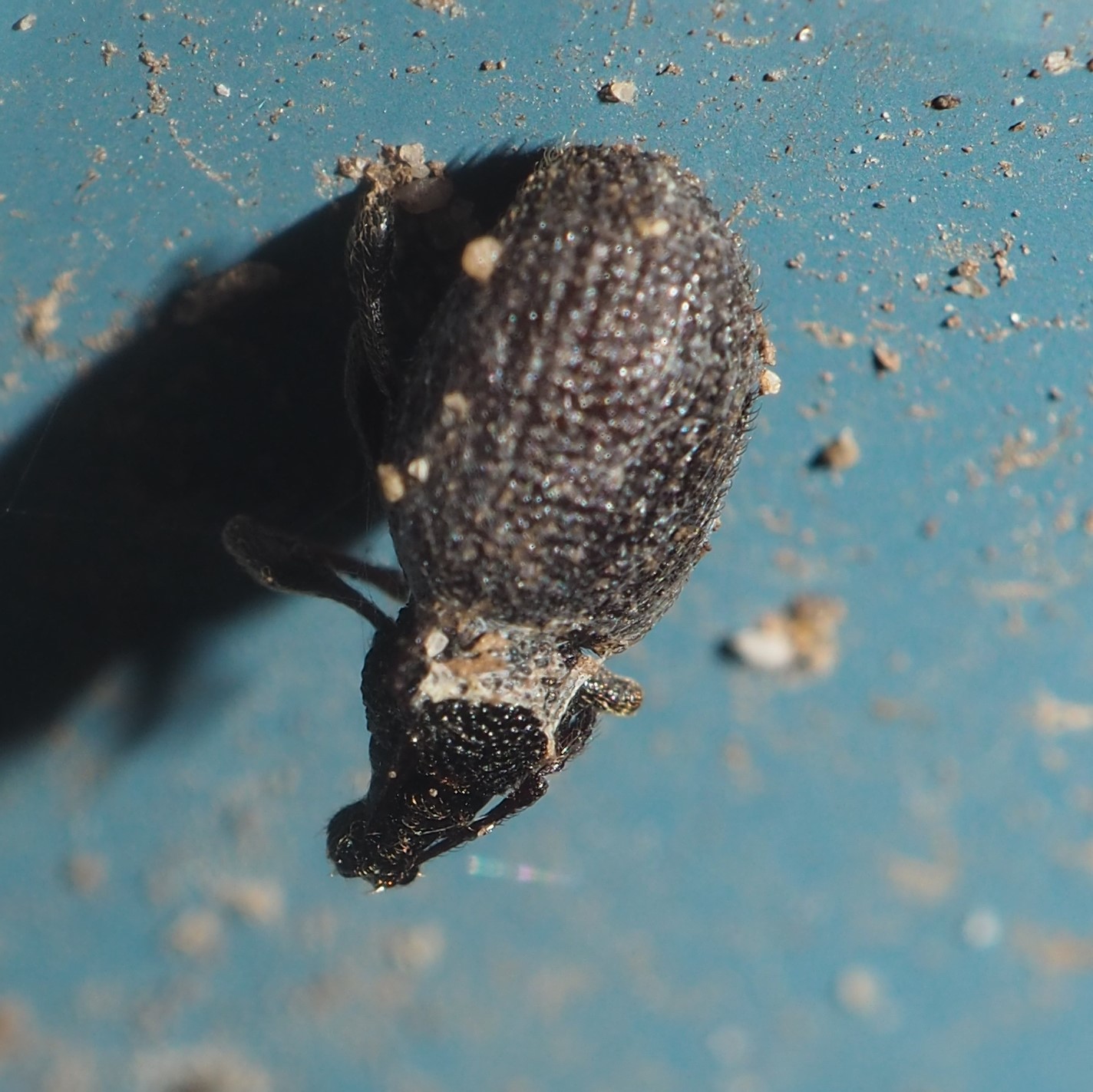
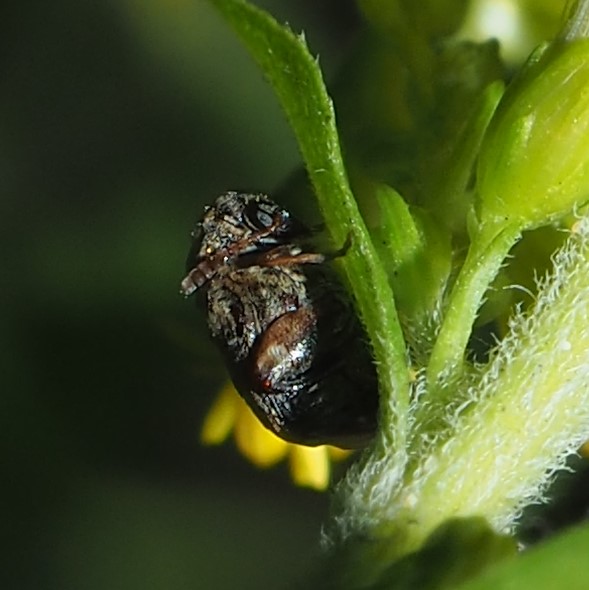

The Assassin Bugs are still common, in their nymphal form. I hope they have time to become adults before we have a frost. The middle image is of one that I surprised - it has its arms up in a protective stance. The last one is peeking out from the inside of a Zinnia flower.
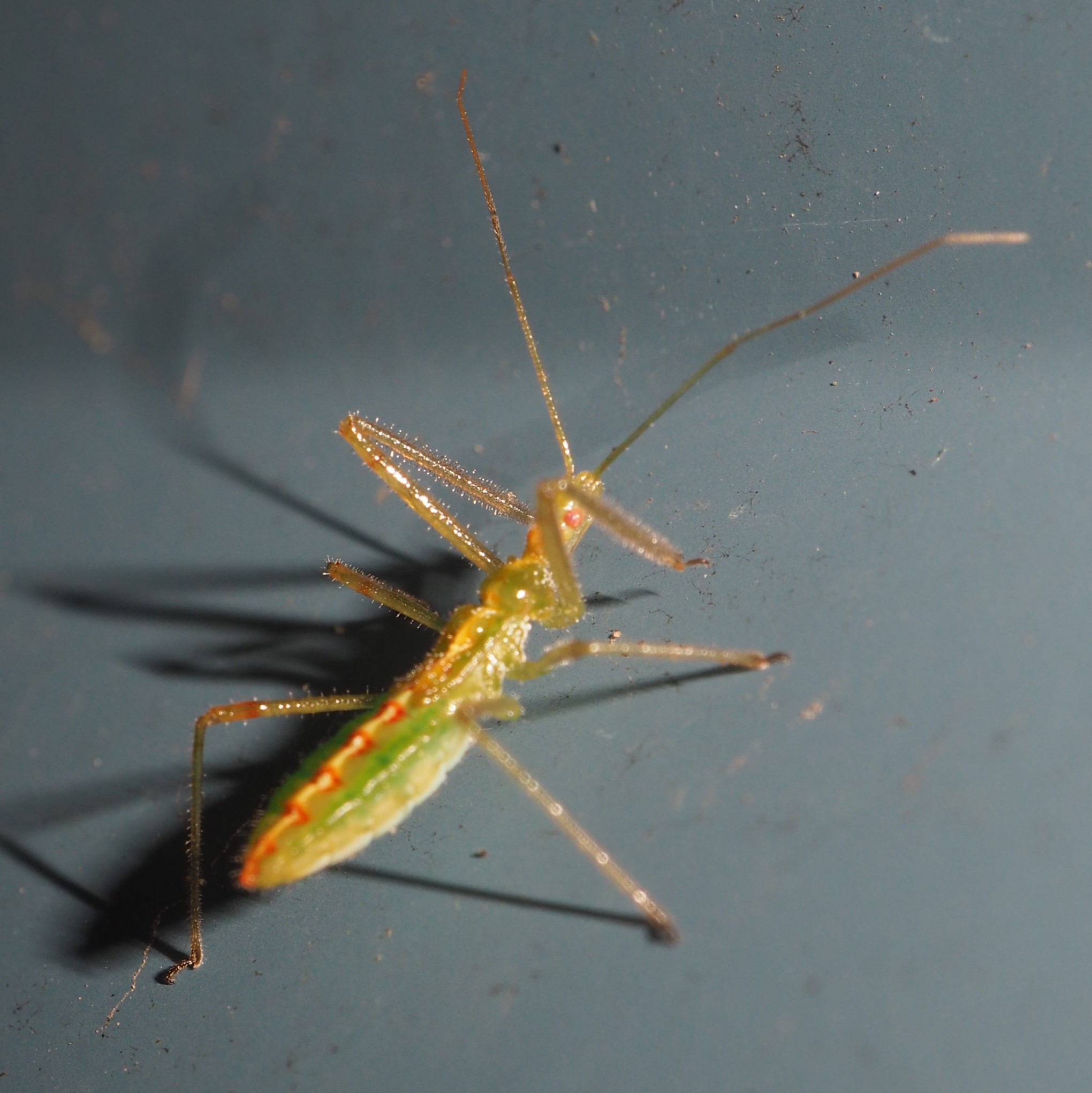
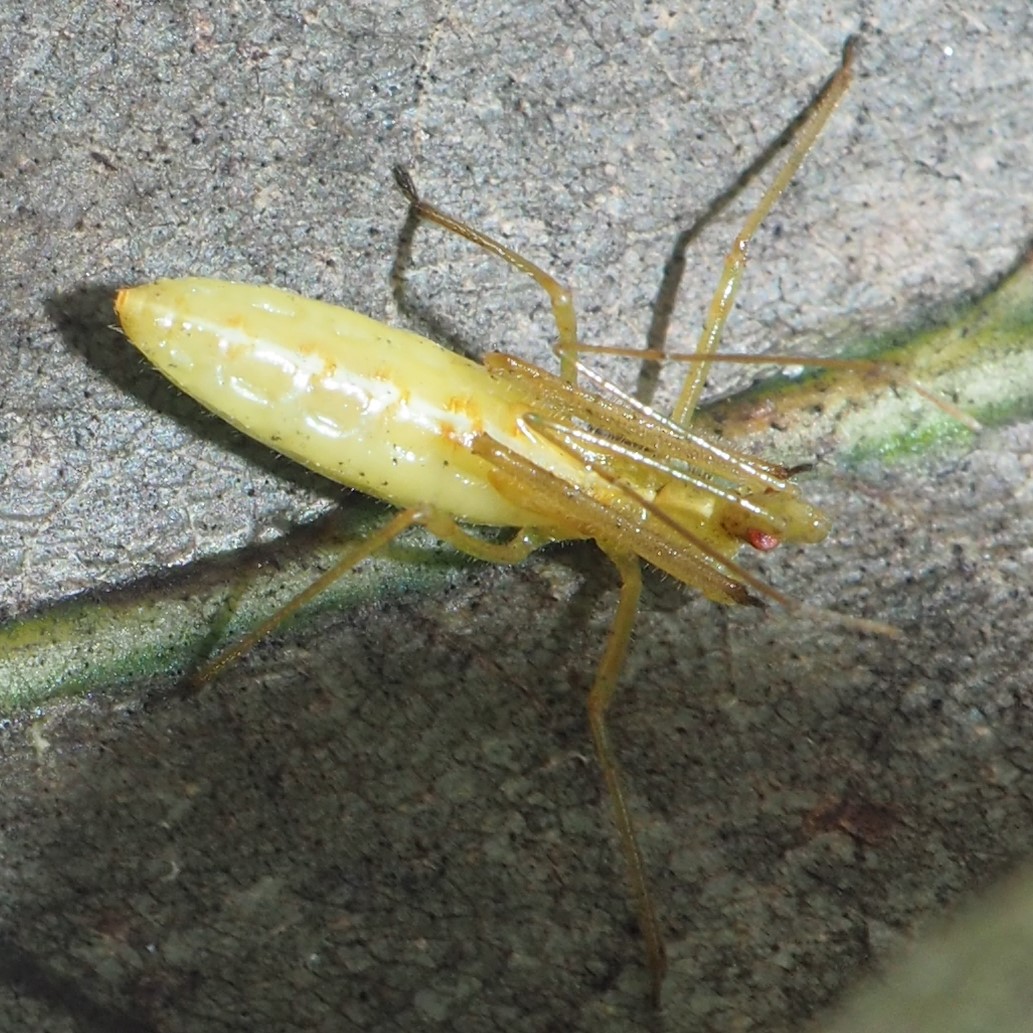

Those Eratoneura genus leafhoppers are all over the place. You can see some of the many variations in pattern.
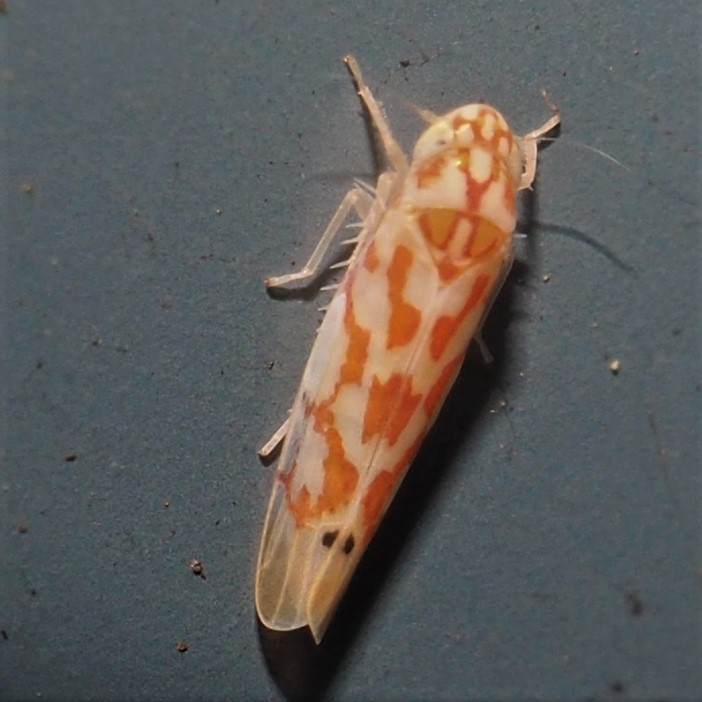
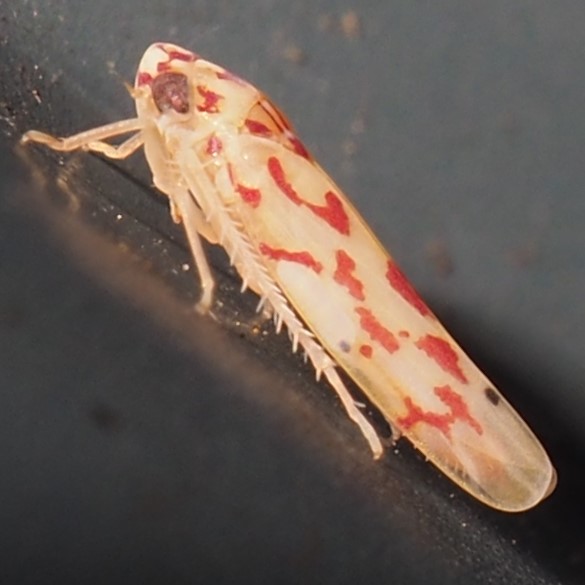
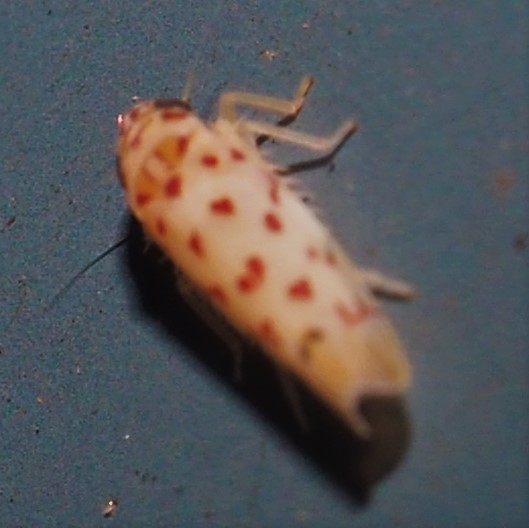
This Leafhopper is Jikradia olitoria, the adult of the cute little nymphs with the retroussé abdomens! Second: the Three-banded Leafhopper (Erythroneura tricincta). And third: it's Lygus season. Every year just as the Goldenrod is fading, it is covered with tiny little Lygus Plant Bugs.
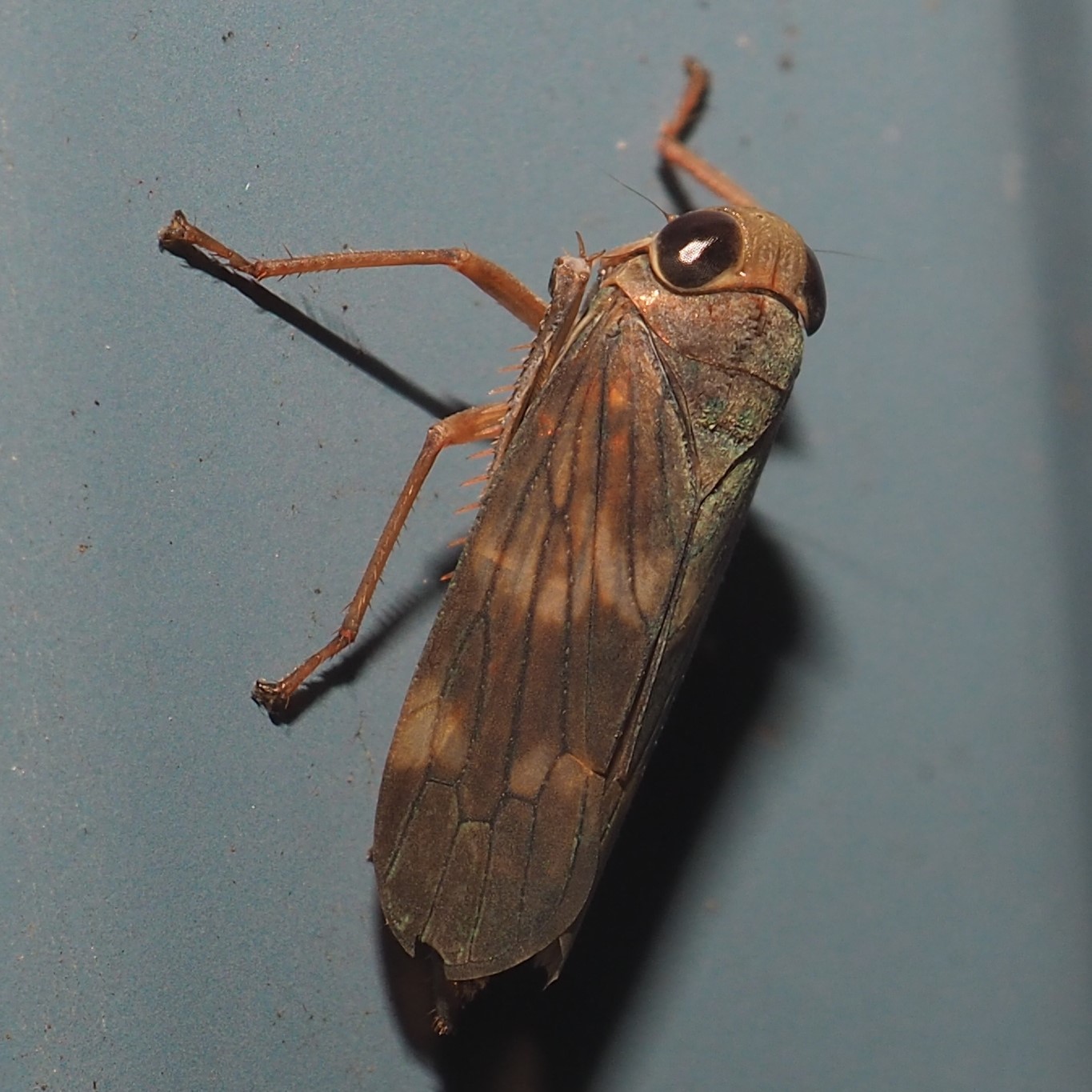
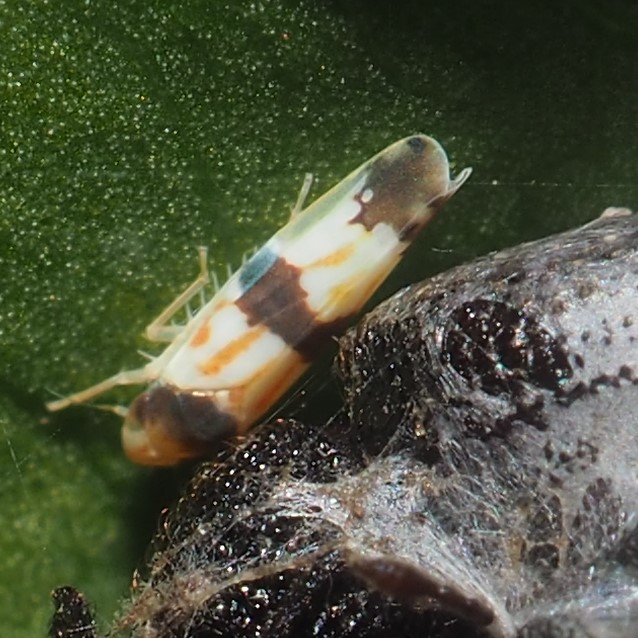
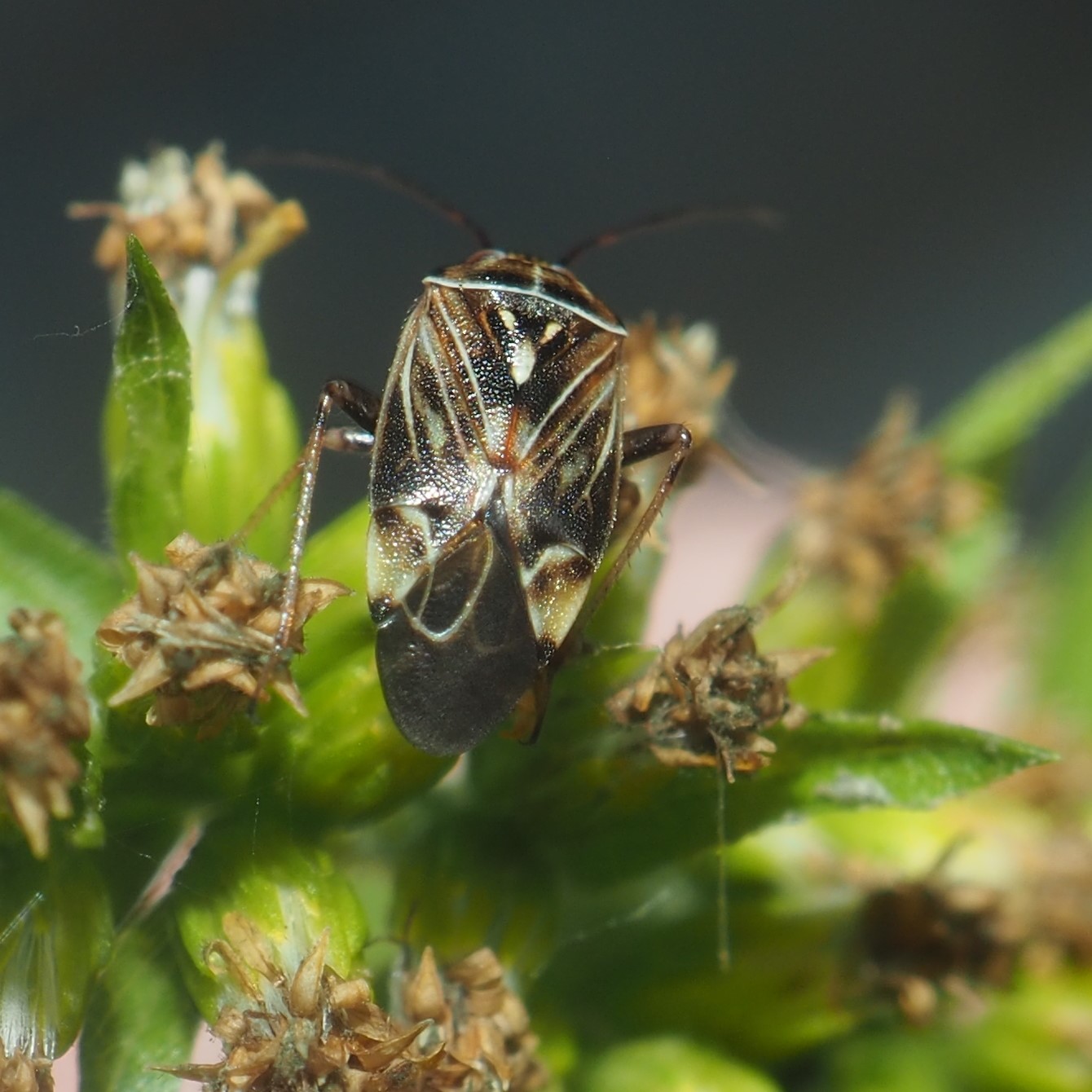
bug black and brown Drymus unus mating 9 28 18 1a
Here's a Stink Bug. Since it has the white patch on its antennae, it may well be a dreaded BMSB (Brown Marmorated Stink Bug). Next is what are possibly hatched-out eggs from the Two-marked Treehoppers. If they did hatch, the nymphs should have been seen by now. Since I haven't seen any Acrobat Ants (or any other Ant species), it's unlikely that there were any nymphs resulting and so maybe those eggs were old ones already. Now to round out the week, here is a possible Drymus unus Bug. You may wonder what its common name is. It must not be common, so it is just called Drymus unus (a member of the Dirt-colored Seed Bugs, Family Rhyparochromidae)! This is about when we should be seeing them. Last is a mating pair from September 29 of last year.
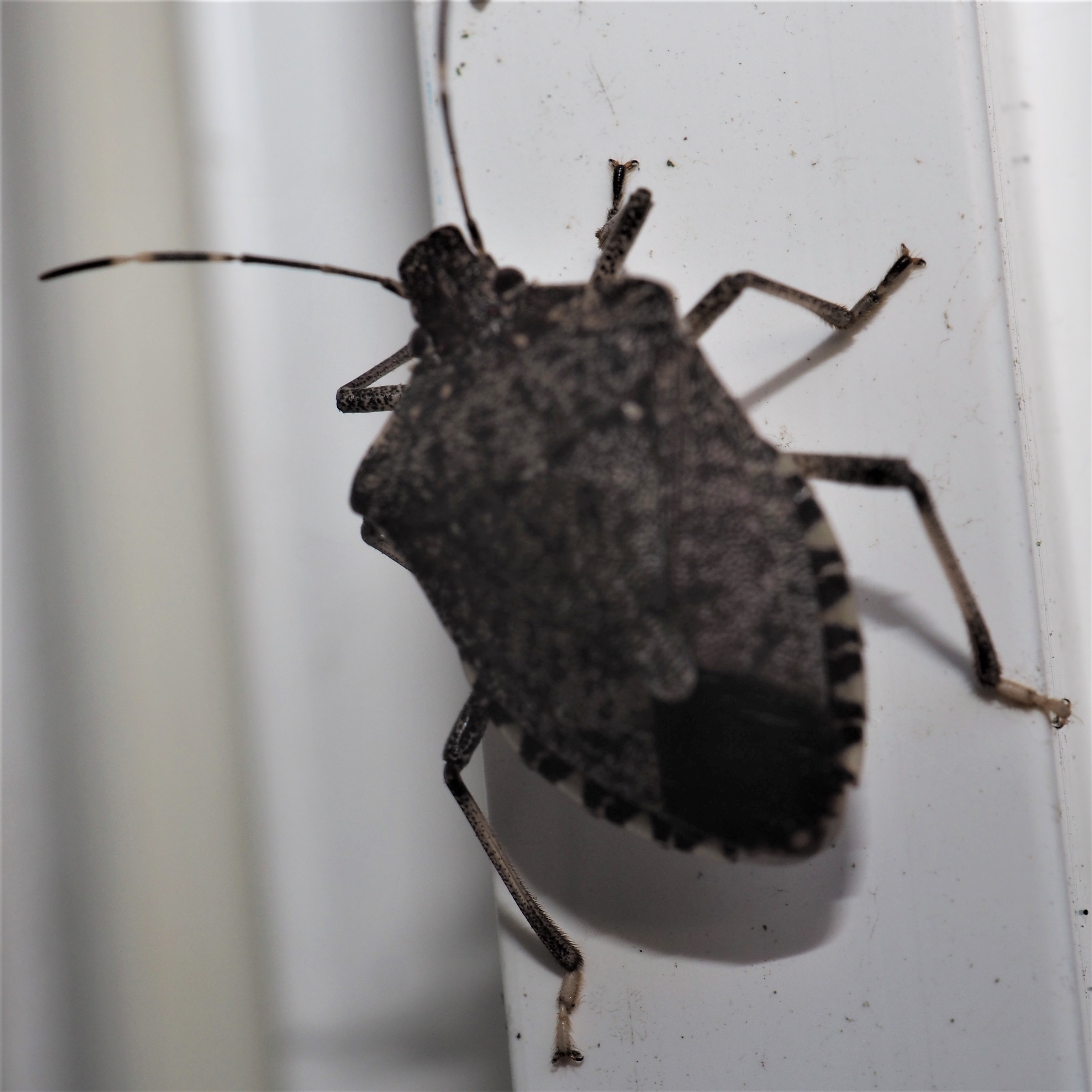

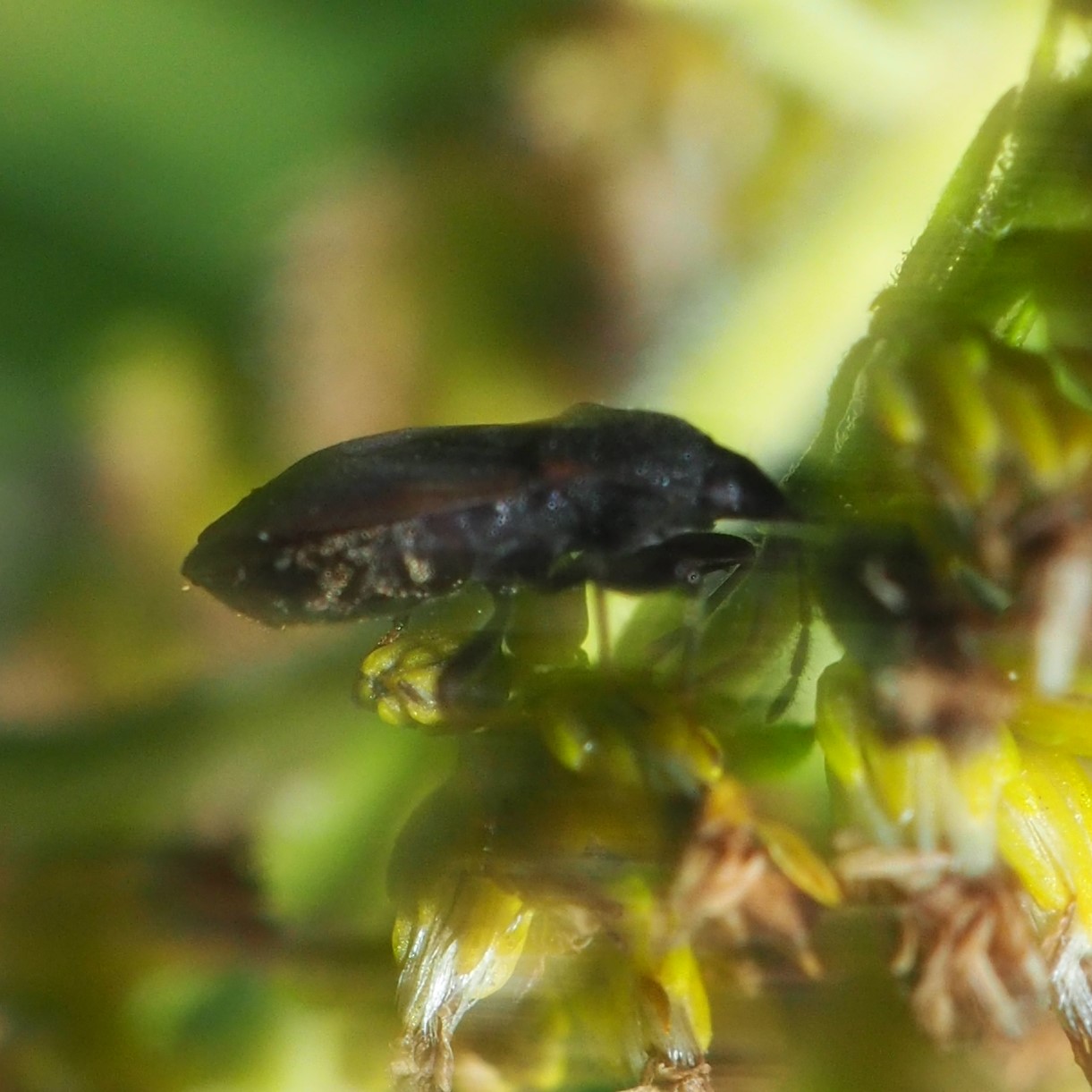
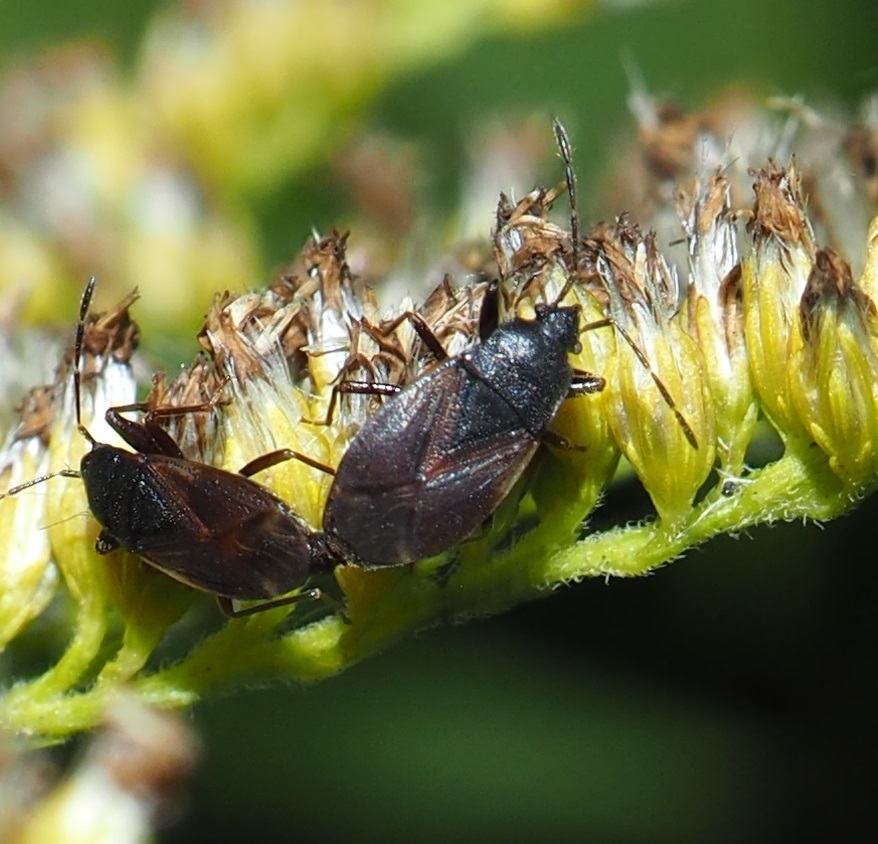
We've arrived at Butterflies, Moths and Caterpillars. First and foremost, can you believe an afternoon so beautiful that Monarchs and Painted Ladies came to visit and tasted from each aster bloom in sight? And let you get close enough to shoot several times in a row? And then sauntered over to the next blossom, a real pub-crawl? Well, visit me on September 30, 2019, about 3:15 pm. I'll try to reconstruct the warm but not hot and humid day for a change. It was only one Monarch Butterfly, but it must have been there about an hour. (The third picture also captures a Yellow-collared Scape Moth above the Butterfly, just to the right - the Butterfly's antenna points right onto the Moth. For some reason the moth's body looks blue instead of black.)
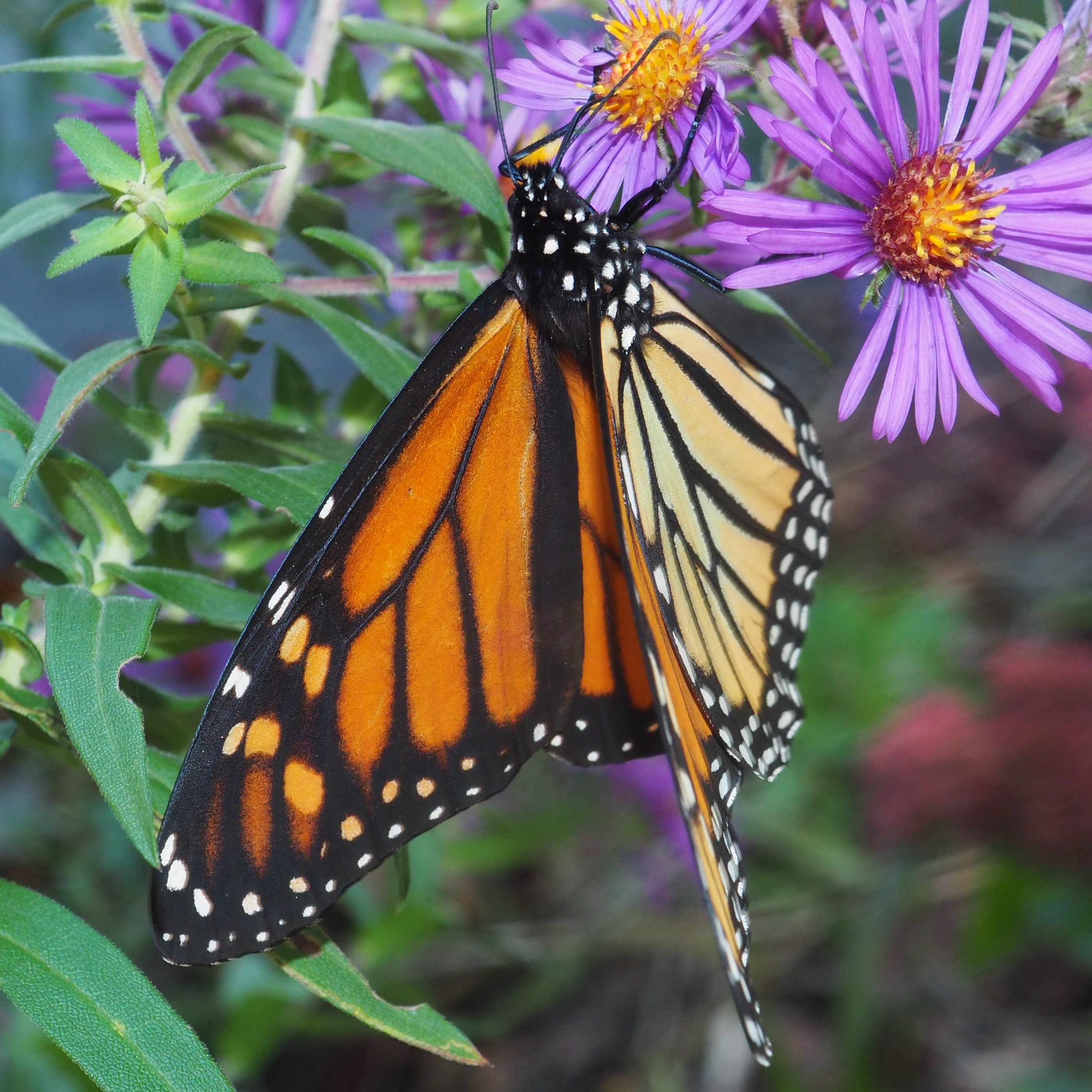
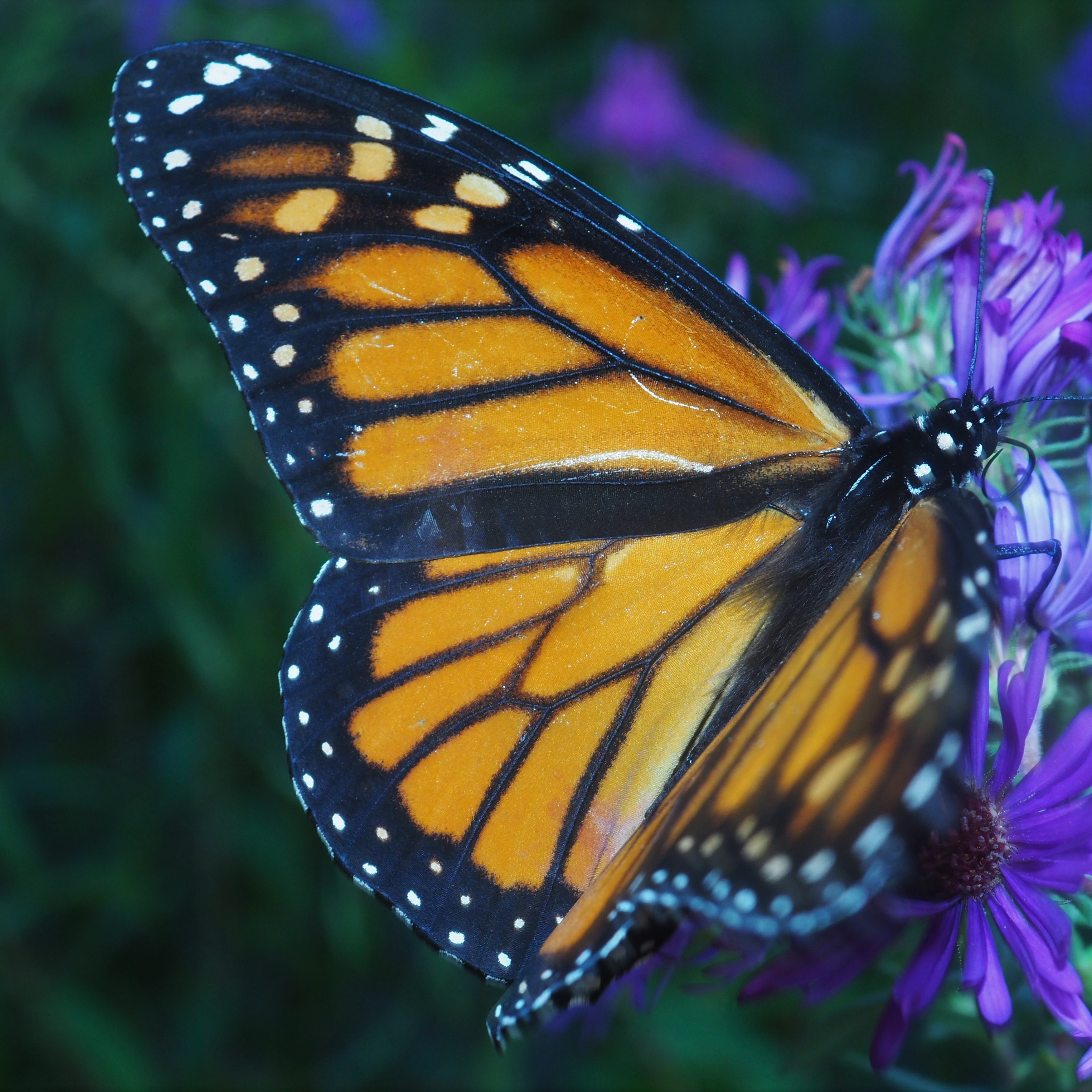

A Painted Lady also relishes the Asters. Who wouldn't?
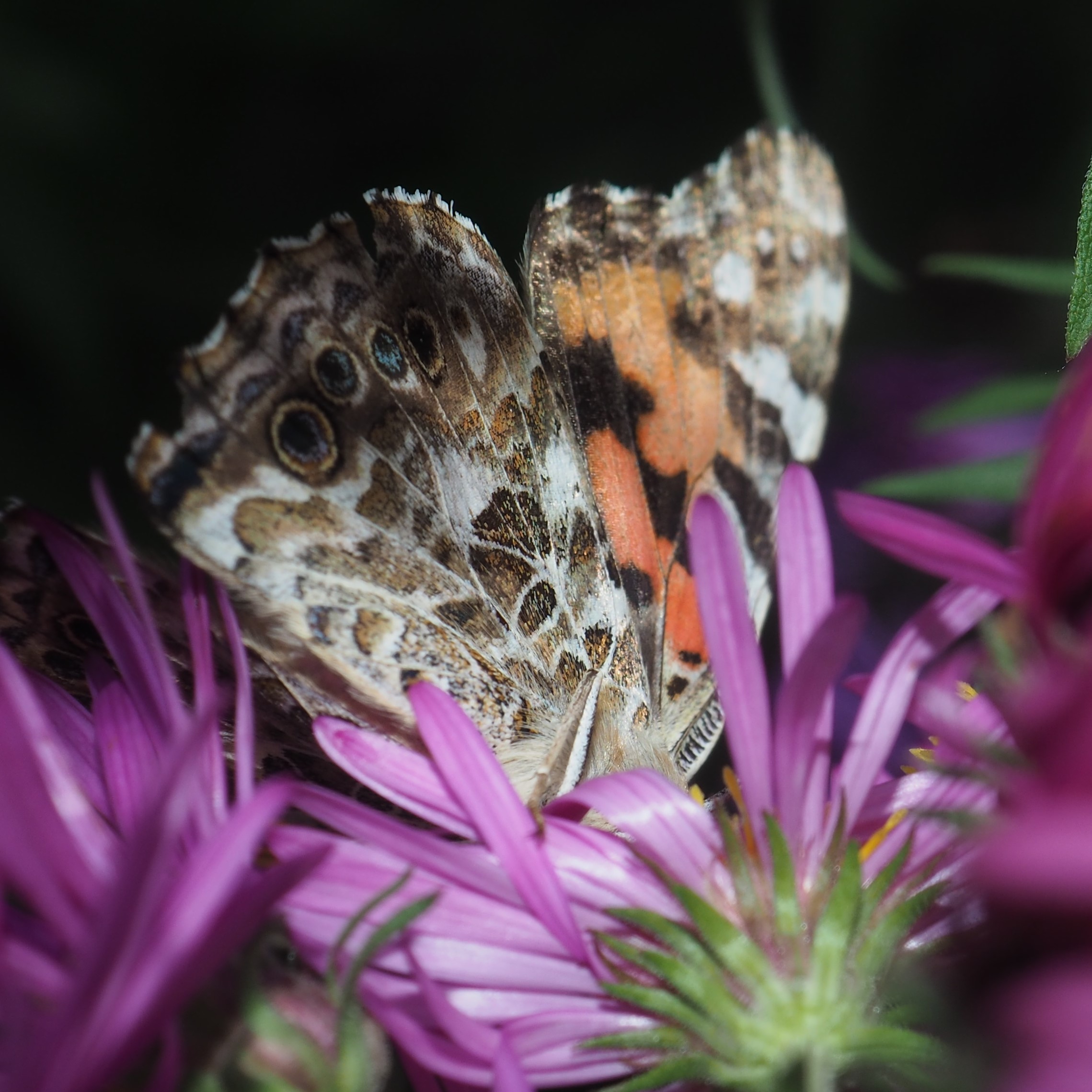

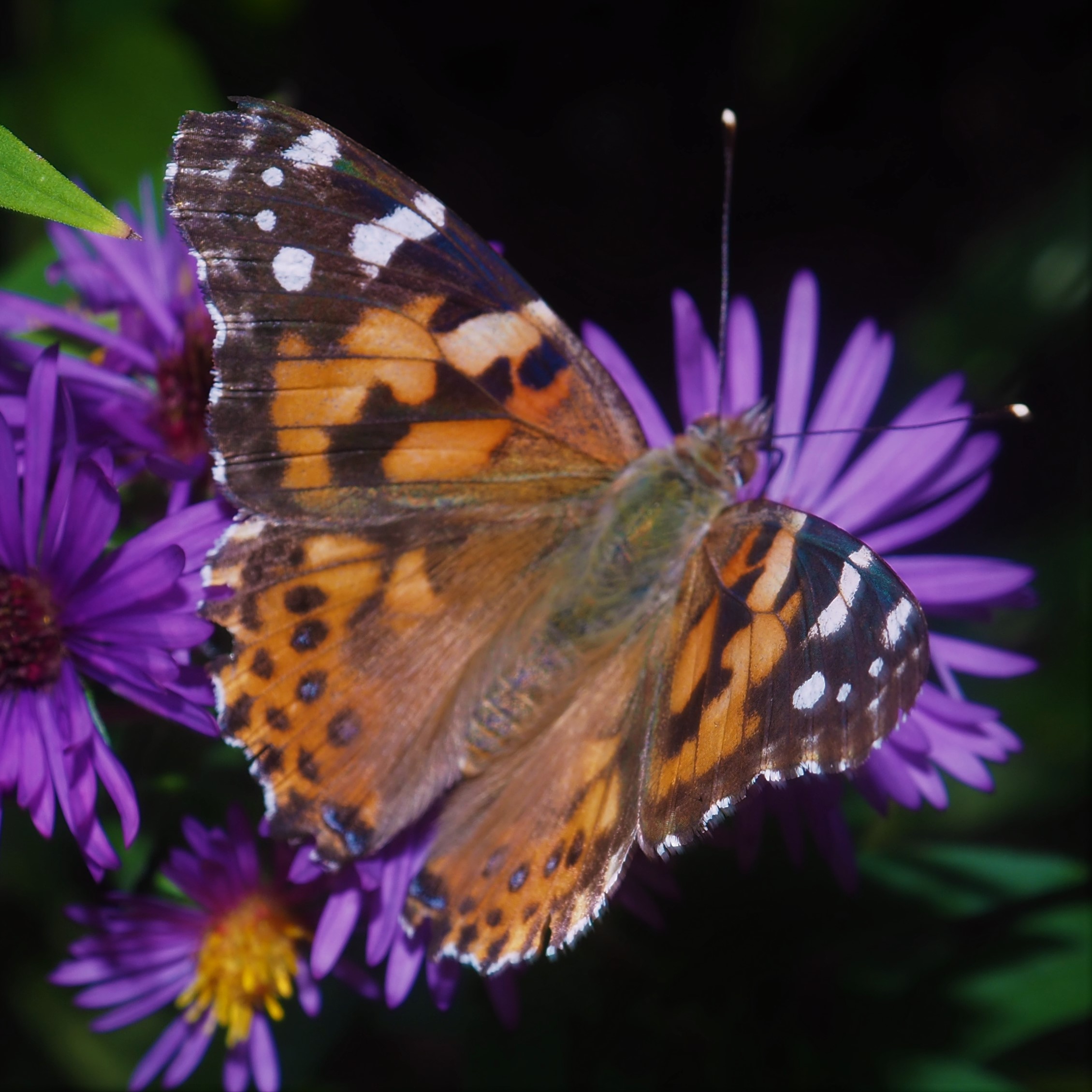
The Yellow-collared Scape Moth is still here. Remember we saw it on September 17? Beautiful little thing. Here is a tiny moth, probably of genus Phyllonorycter. And another moth tucked under a board on the deck siding.
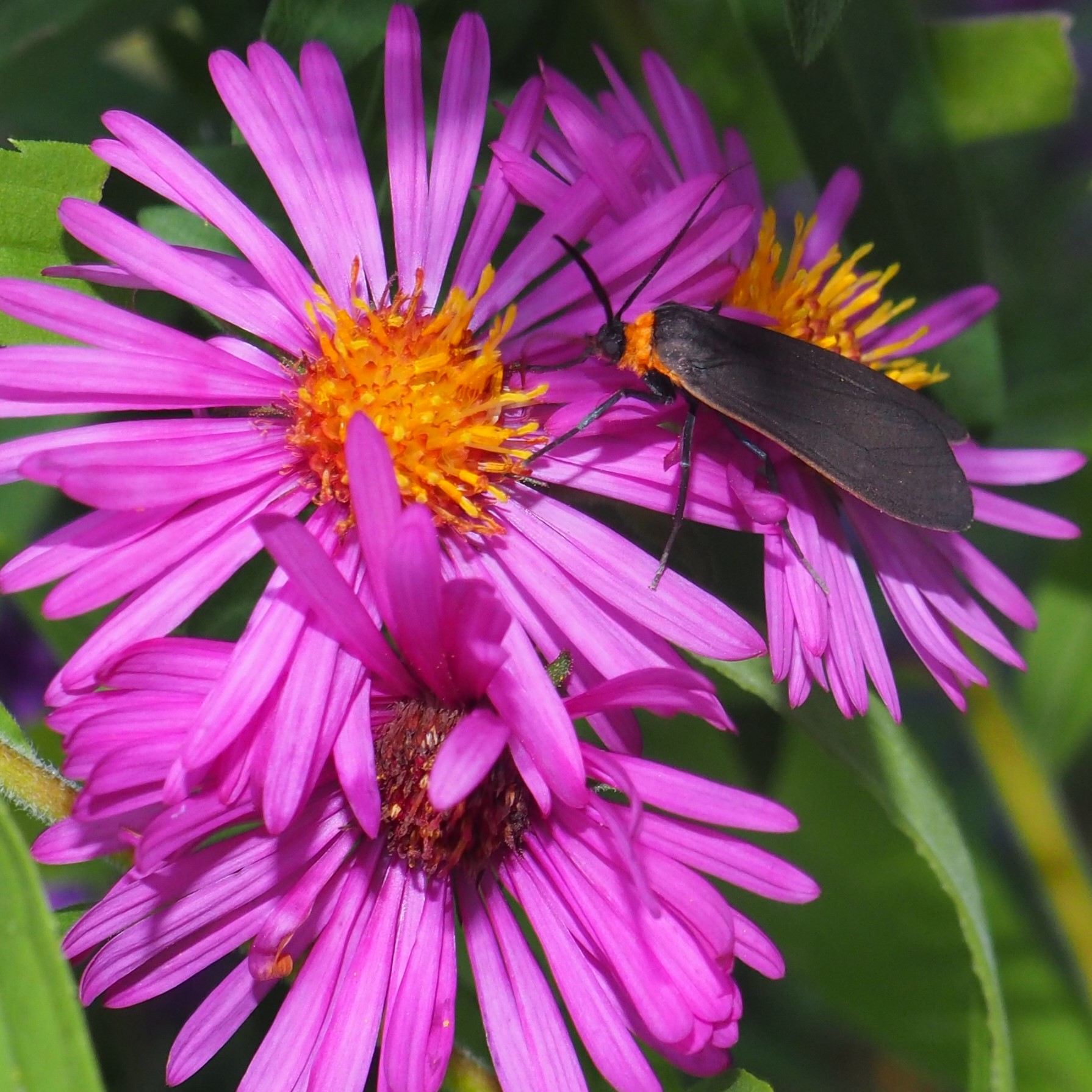
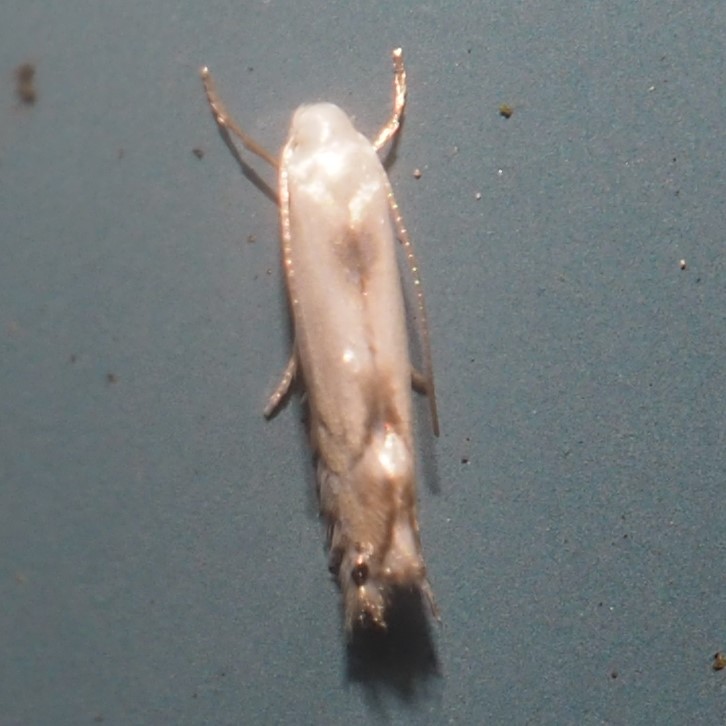

This little looper (inch-worm) is the only caterpillar I saw this week. But we had these two appearances of Jumping Bush Crickets.
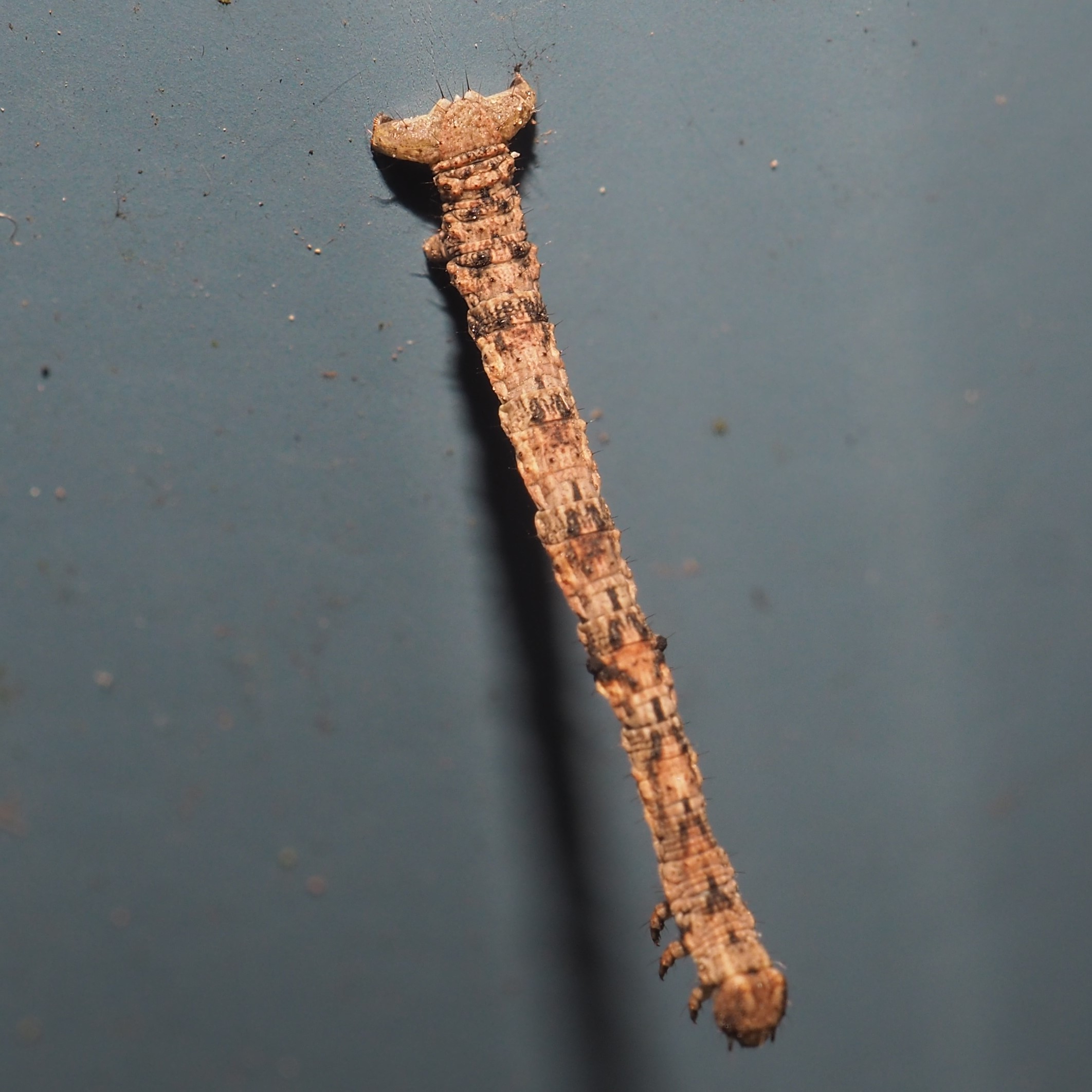
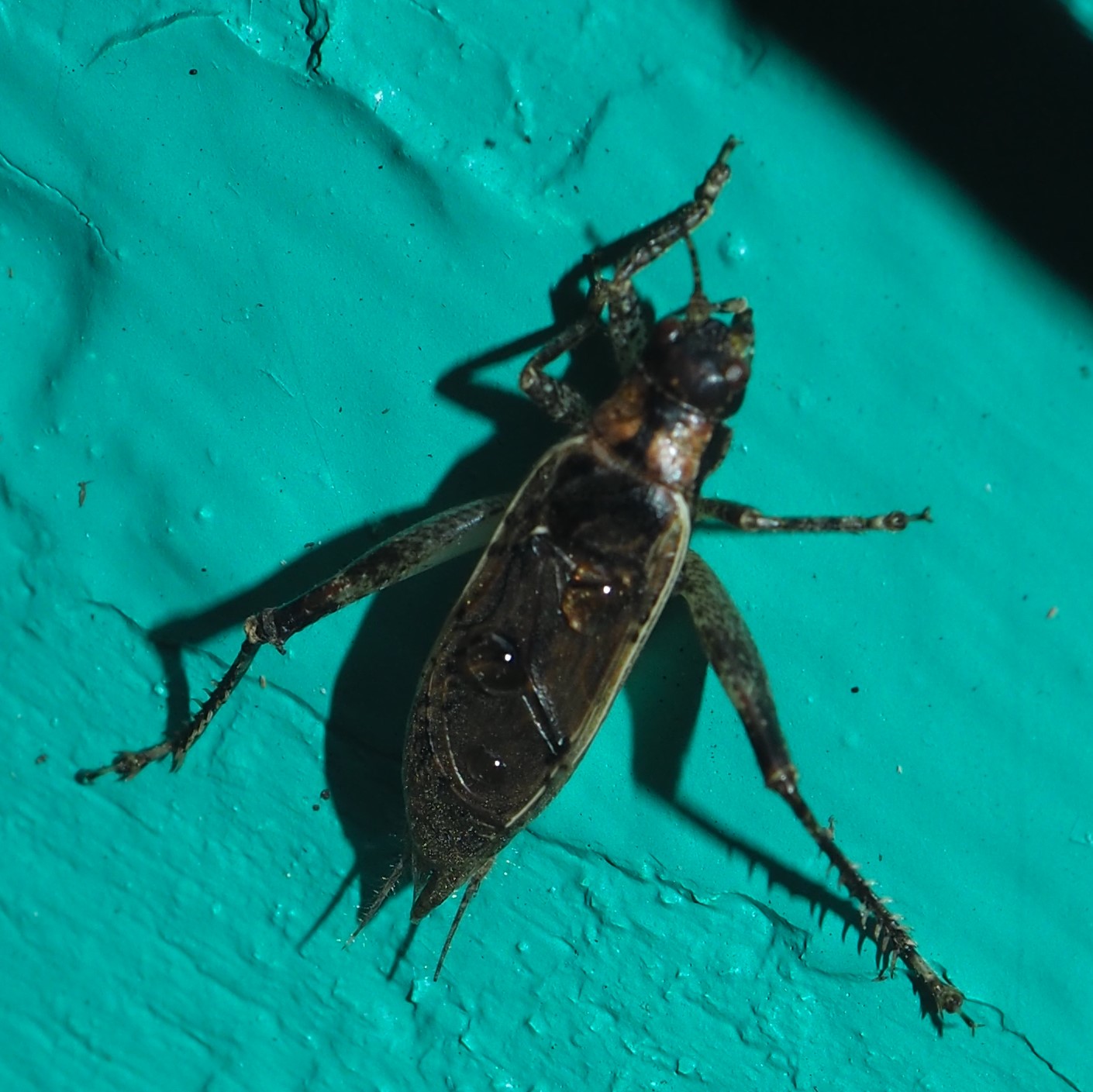

Fishes? Froggy? It was a slow week for pond critters. For one thing, it was too cold to feed the fishes. So I don't have any pictures of them. Froggy may have made one grumpy sound, but I'm not at all sure. So I'm figuring that he is also settling down. Maybe next week? Let's look at the flies, and maybe before I finish editing this blog tomorrow there will be a manifestation.
Here's a Crane fly. There were happily a few Hover Flies. The second image is of fly hover helophilus fasciatus. Helophilus is of course Greek for "sun-lovin'". They actually grow up underwater in the pond, where the larvae eat dead plant matter. Nature's little sanitation workers! Third is another Hover Fly, probably in the genus Eupeodes, supping on that little white-flowered Daisy.
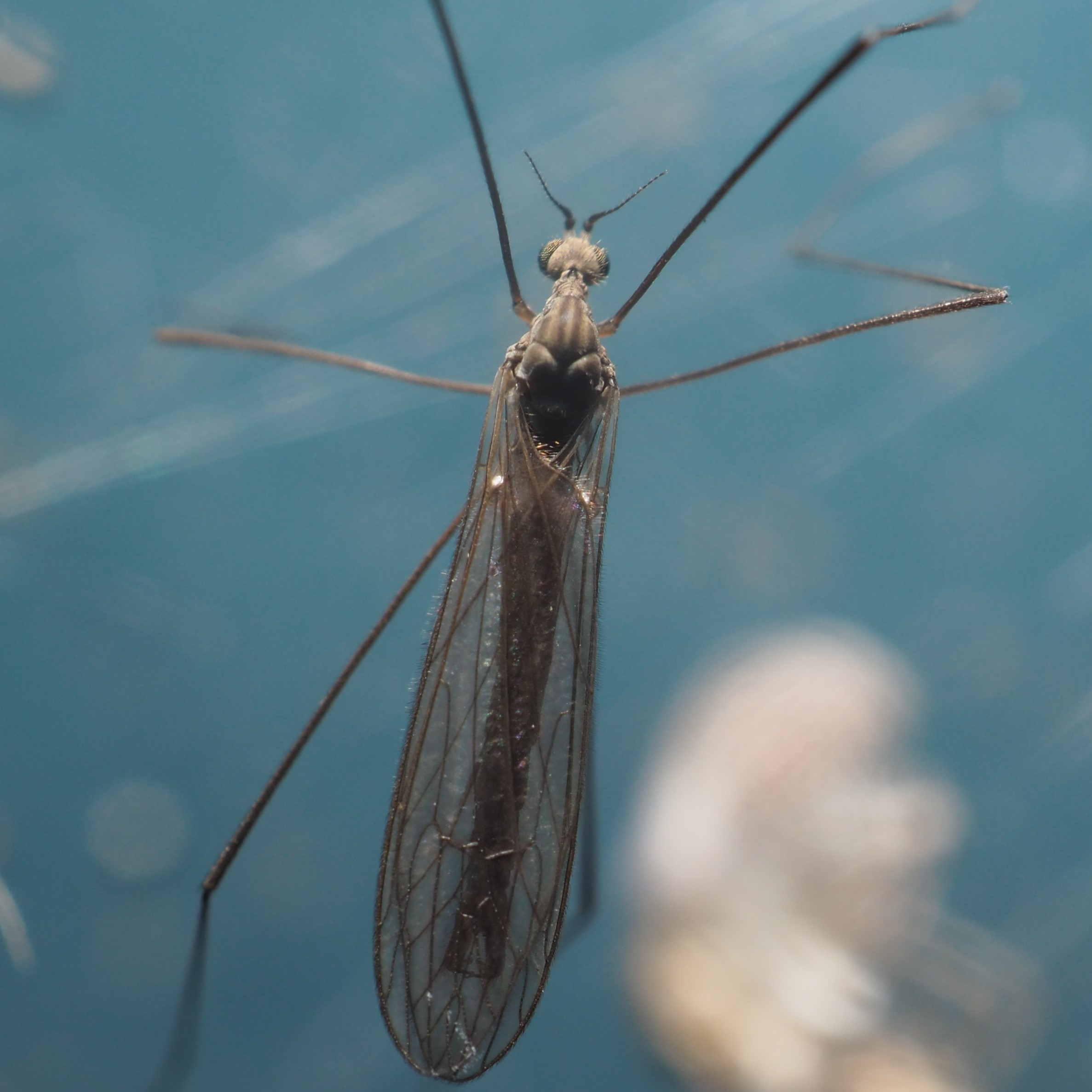
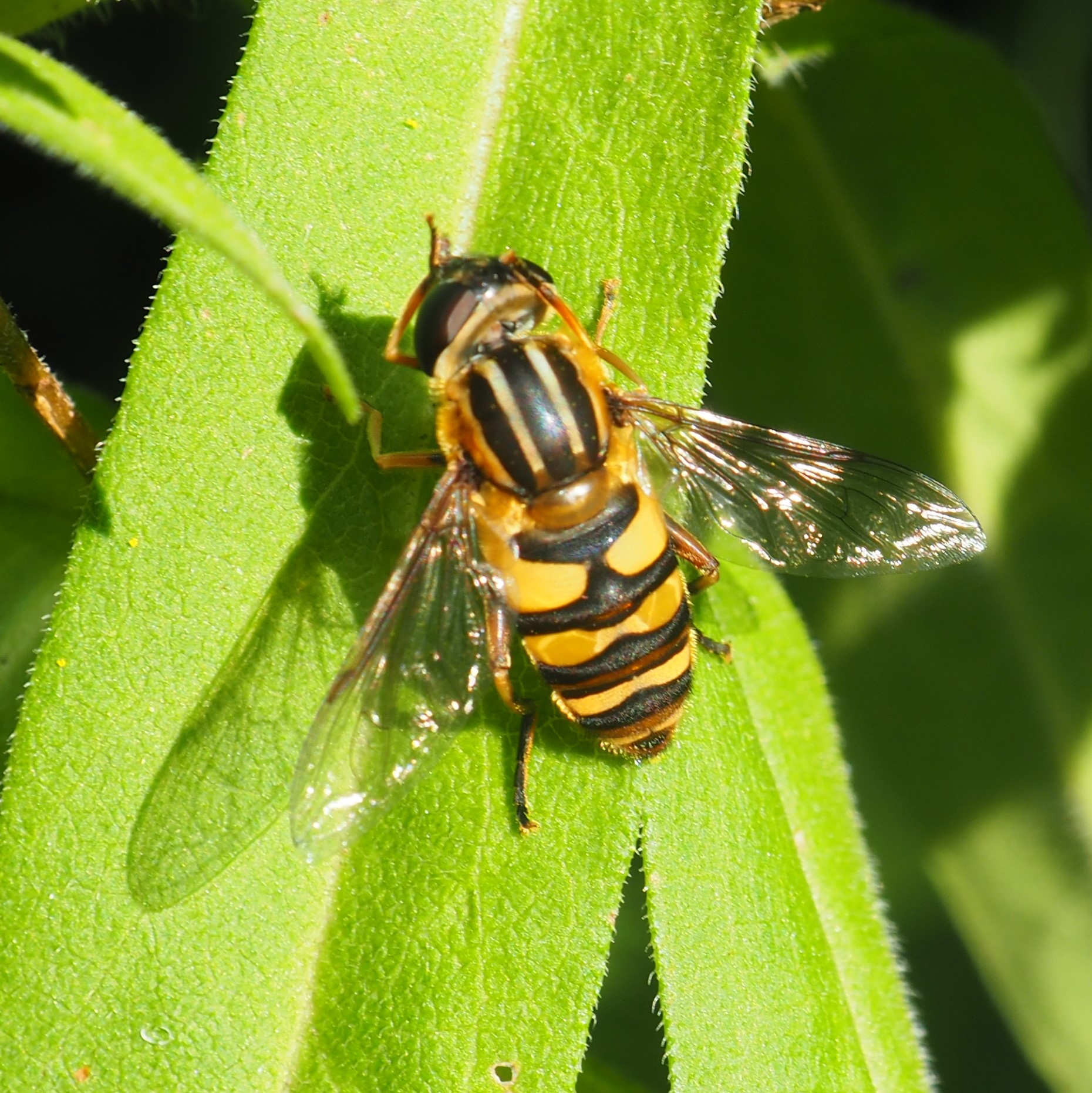
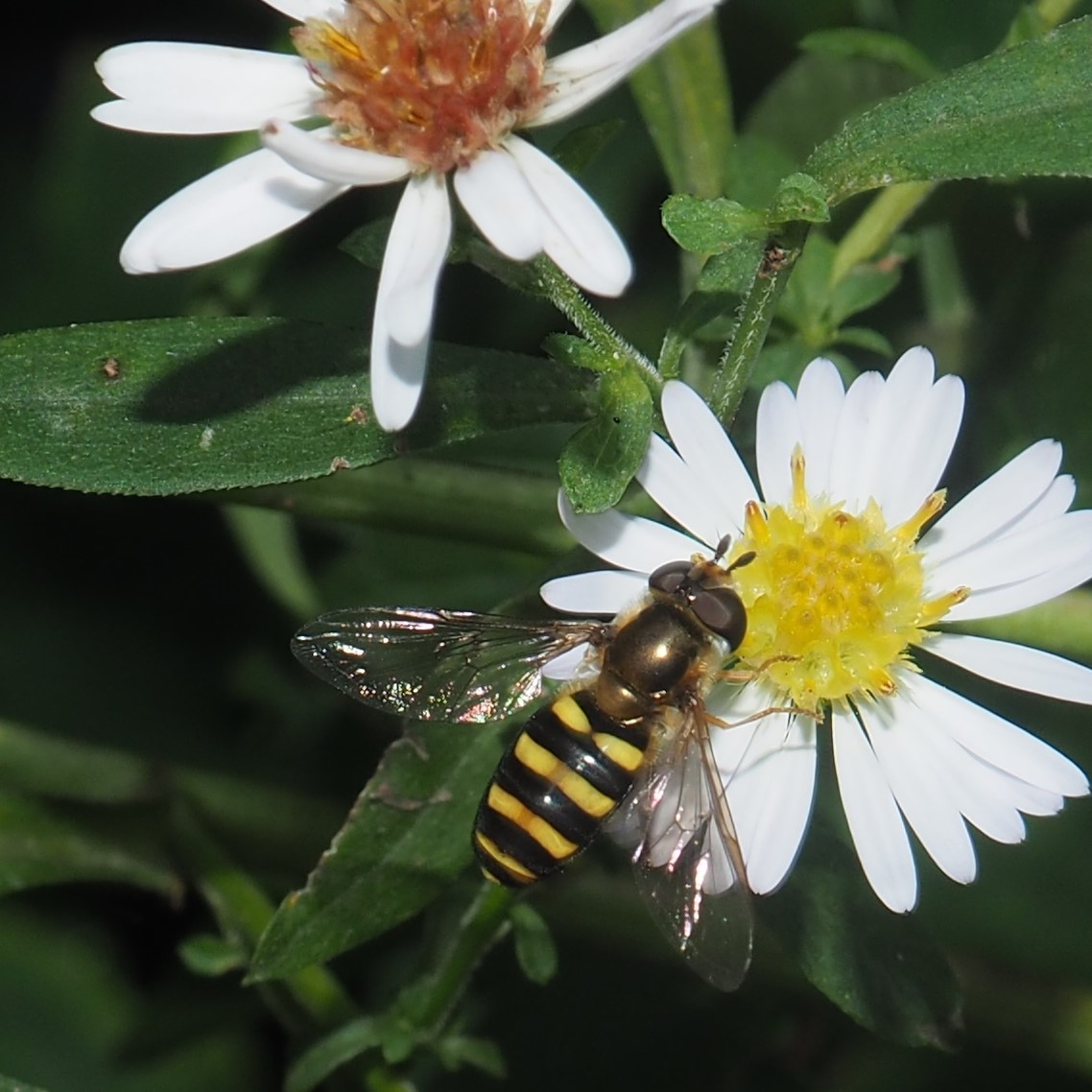
Our favorite Mosquito is still out there. Ouch. I will be wearing a long-sleeved shirt for a while now. Some counties in Michigan are going to start spraying poison for mosquitoes because some of them are carrying Equine Encephalitis virus. This is no joke - a few animals and people have died. But Calhoun hasn't yet mentioned doing it. This Moth Fly is still showing up every day.
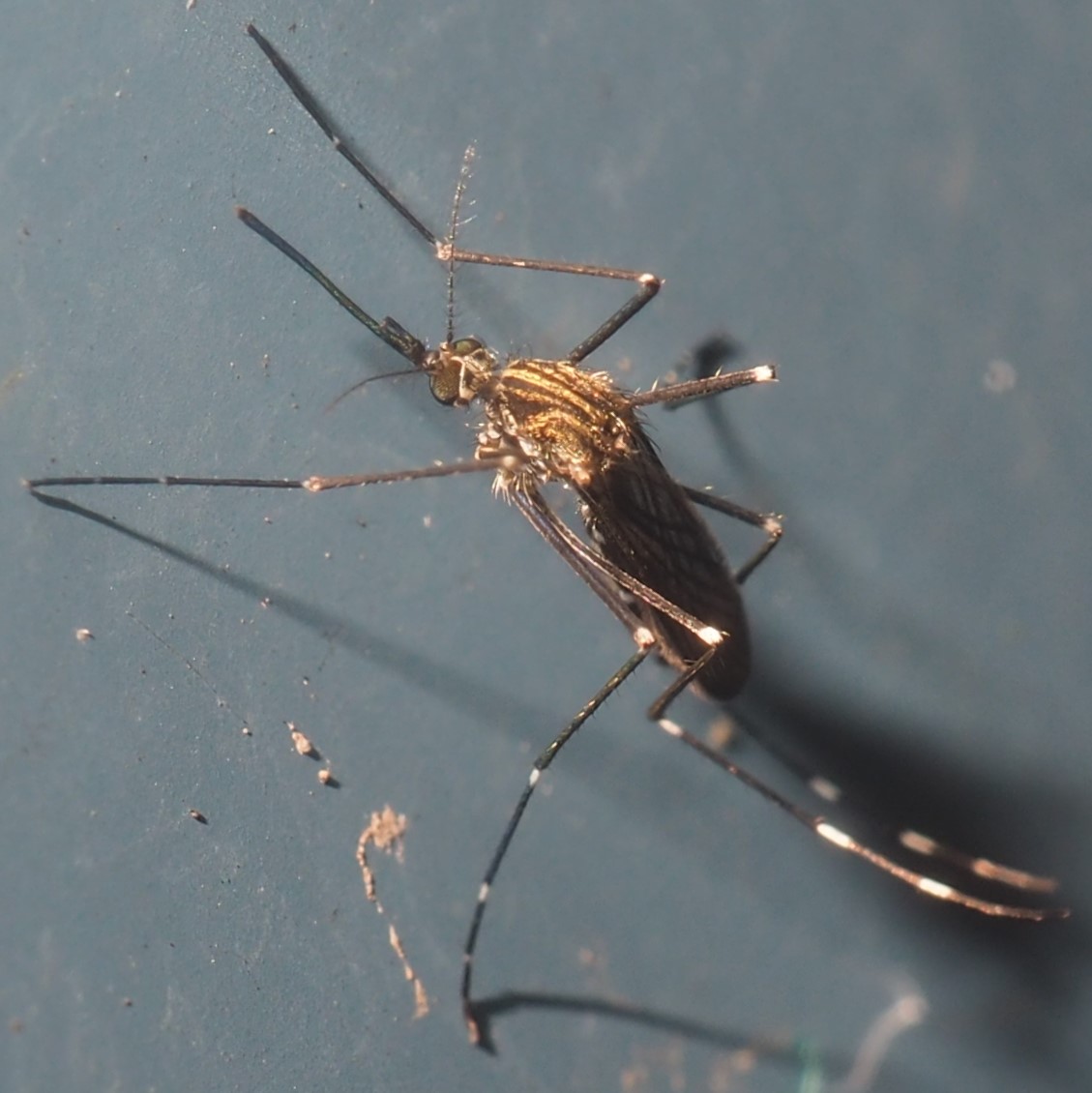

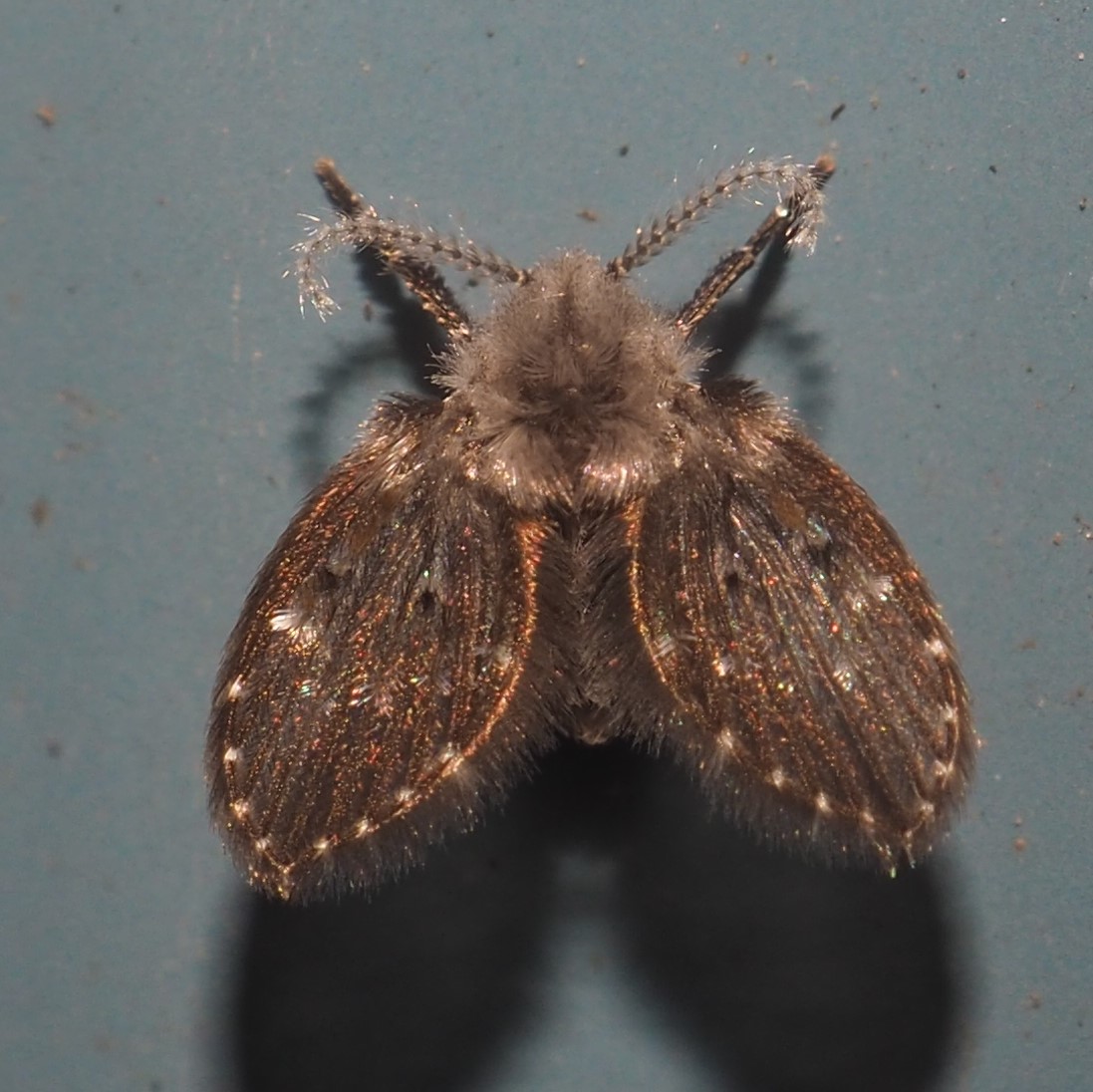
We've had a lot of flies with this basic shape.
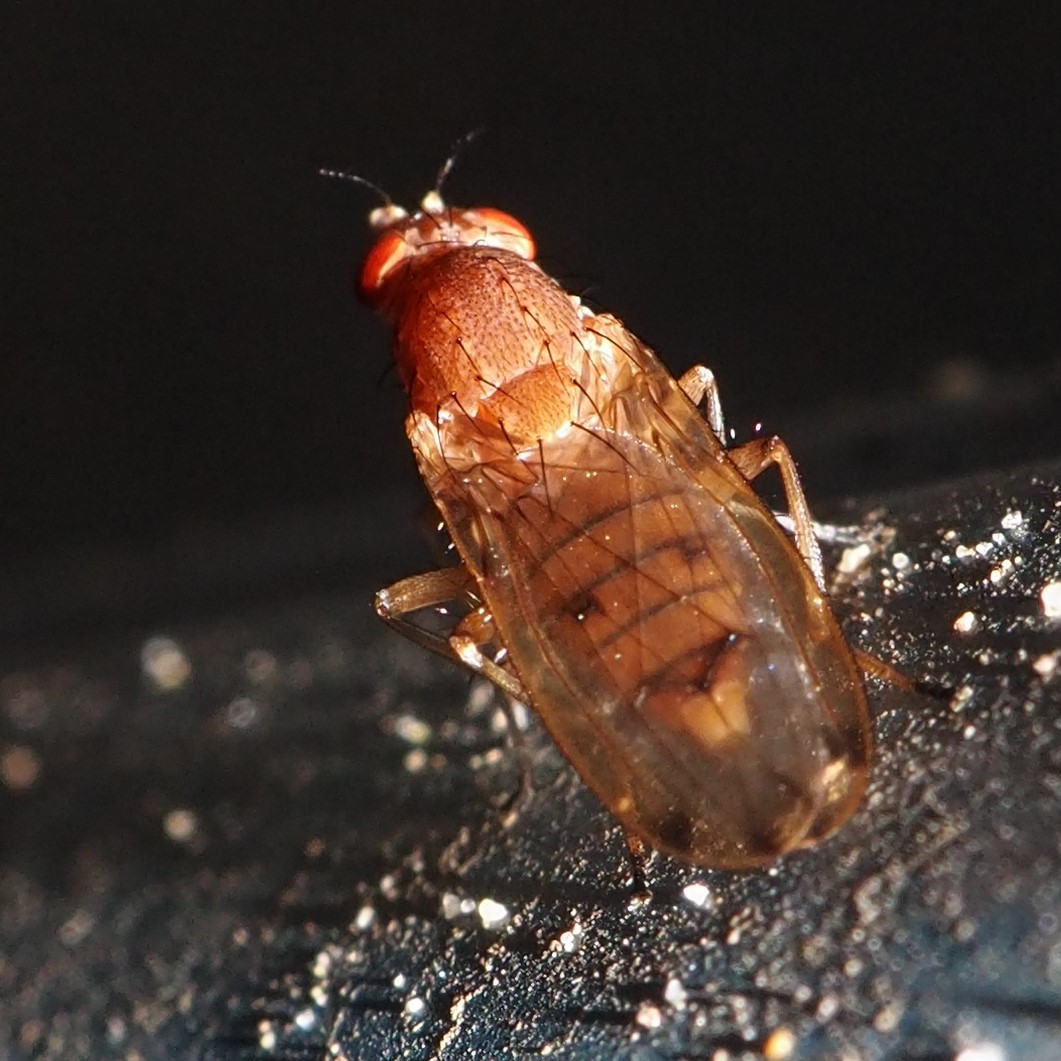

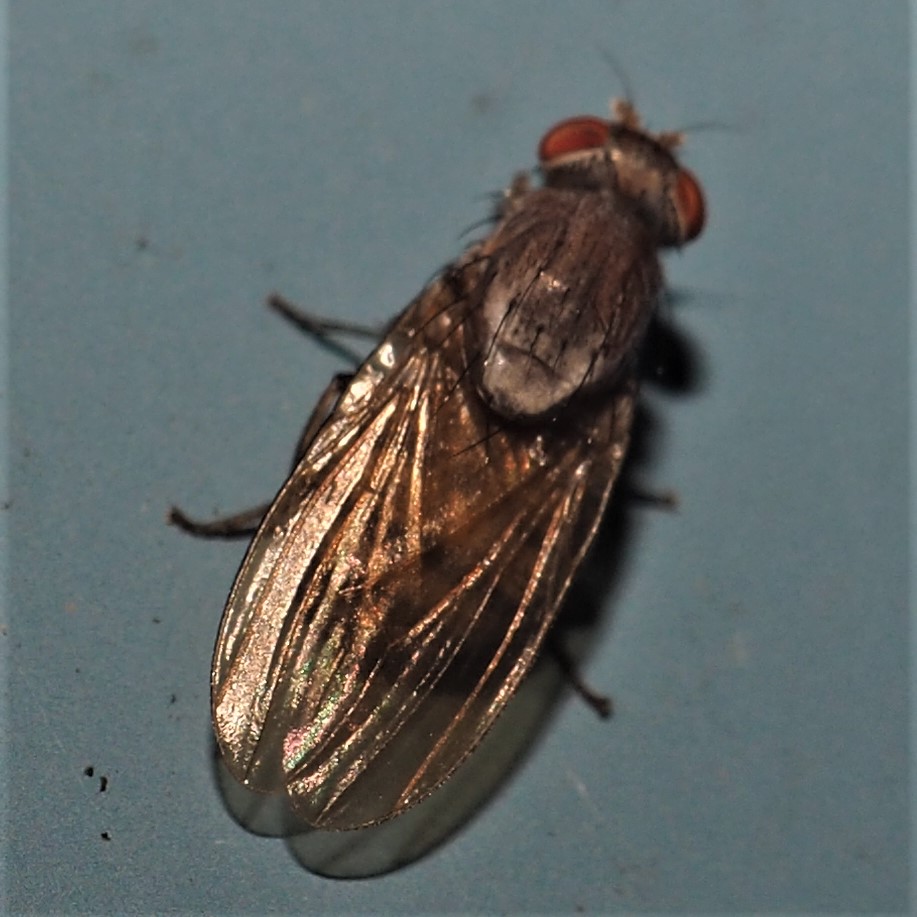
Why do I think this next fly is actually a Robber Fly? The ID app on iNat suggests any of the following: Bot Flies, Blow Flies, and Allies (Superfamily Oestroidea). Not Robber. It too loves the little Daisies. Second is one of the Bottle or Blow flies, I think. What a pretty blue color! Last is probably a Root Maggot Fly, one of the most common flies in this neighborhood. You can spot them on a sunny day by the yellowish color under their wing. My goodness, that seems to be the end of the Fly section!
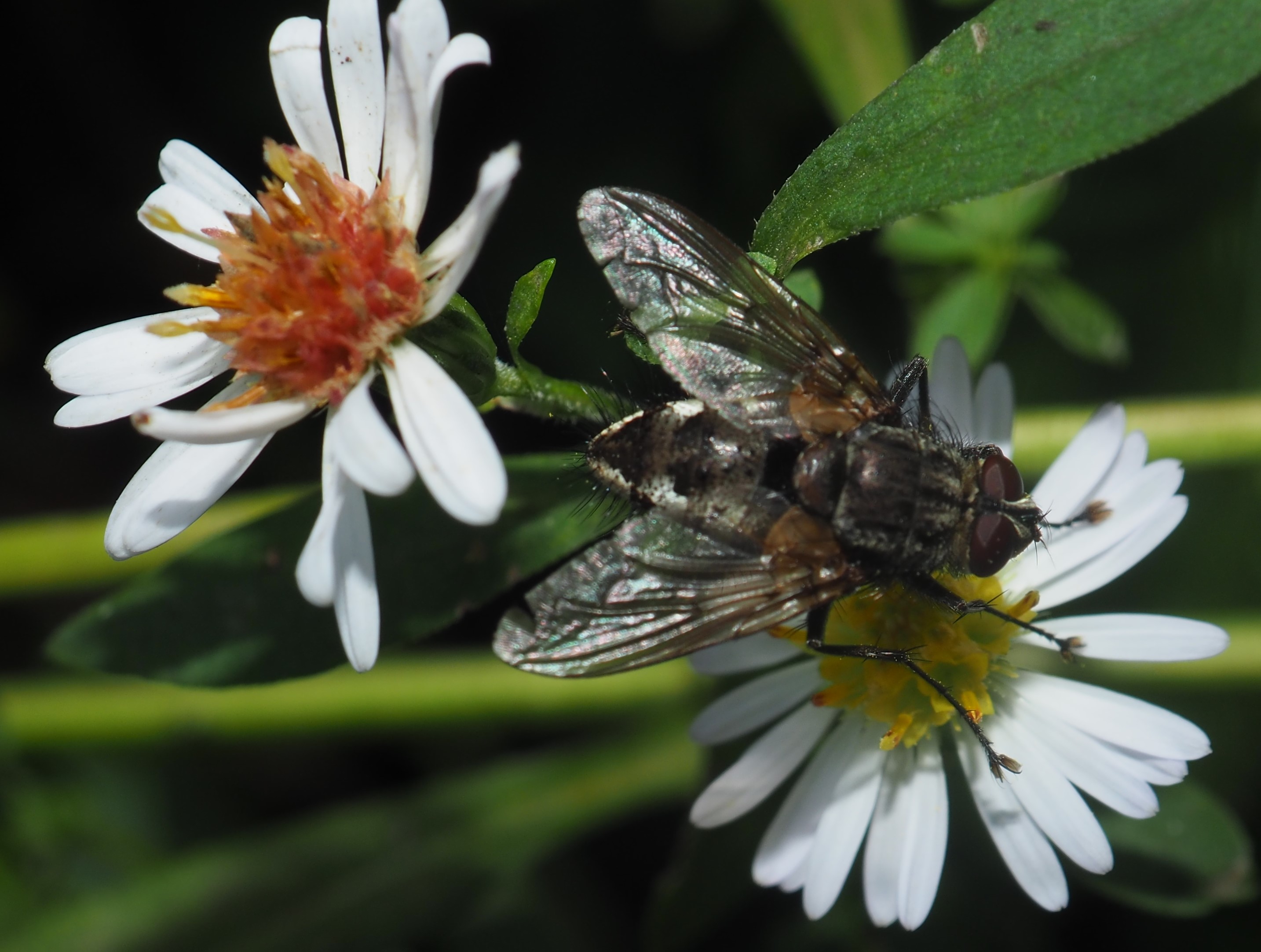
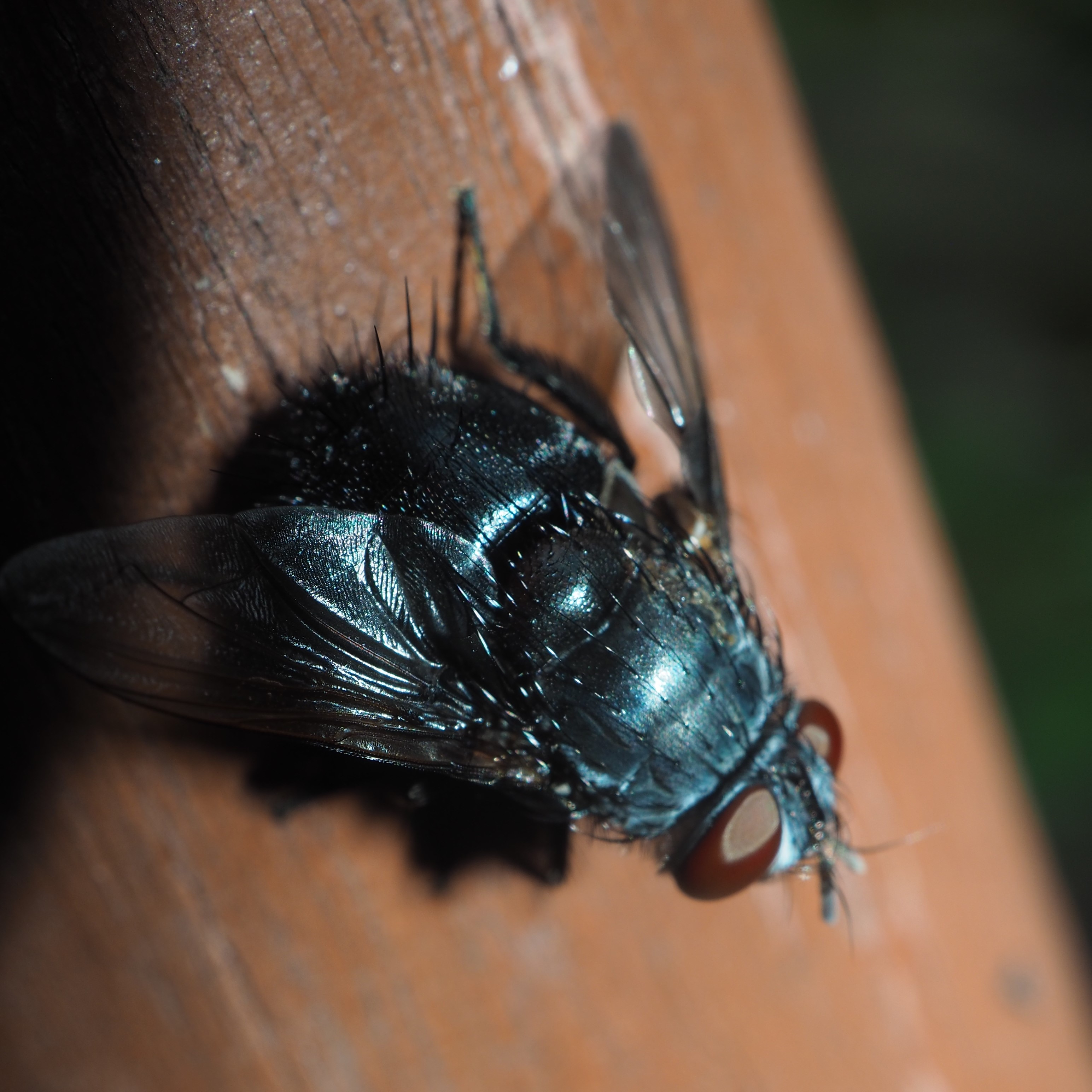
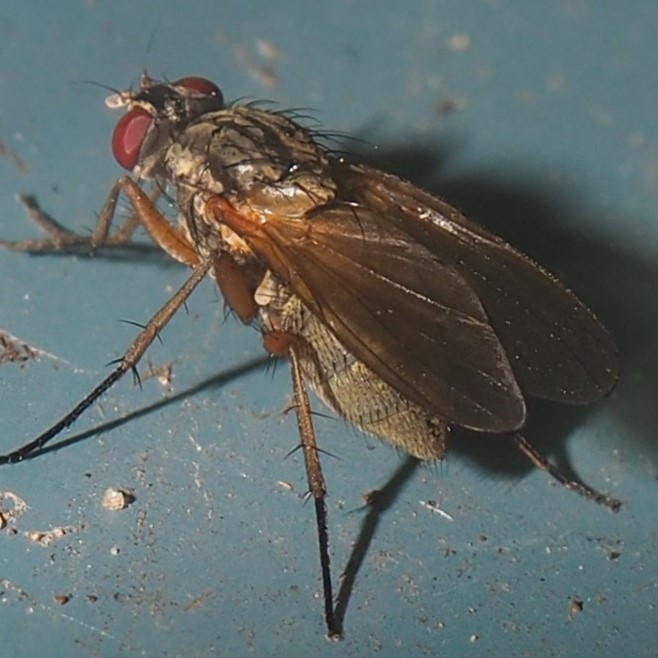
With the rain come more Snails, like this Glossy Pillar (Cochlicopa lubrica) climbing the siding. I always gloss over the Common House Spiders, they really are COMMON. Every day I see about a dozen or more, especially the past few weeks. Image 2 shows a typical pose, but image 3 really tickles me. Do you all see what I see - a caricature of a current President of a current country? If the picture seems too large, try squinting. Did I mention these spiders are COMMON?
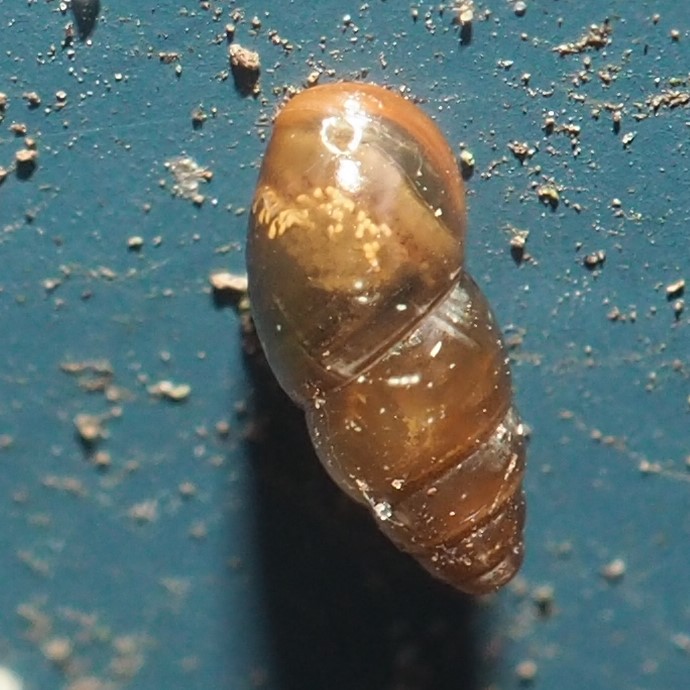
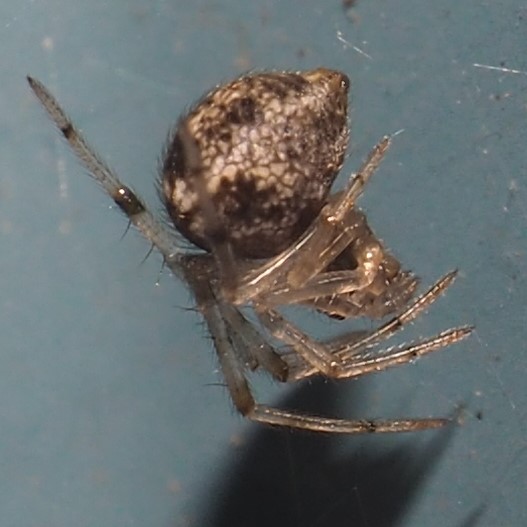

The Grass Spiders are quite large now. This one has left its plant-based nest and is running along the shop siding. The Long-jawed Spider stayed on the wall for many days. And the Cross Orbweaver kept its web going for several days too. In picture 3 it has its tummy towards us, and in picture 4 (the dorsal view) we see the Cross pattern that give this spider its name.
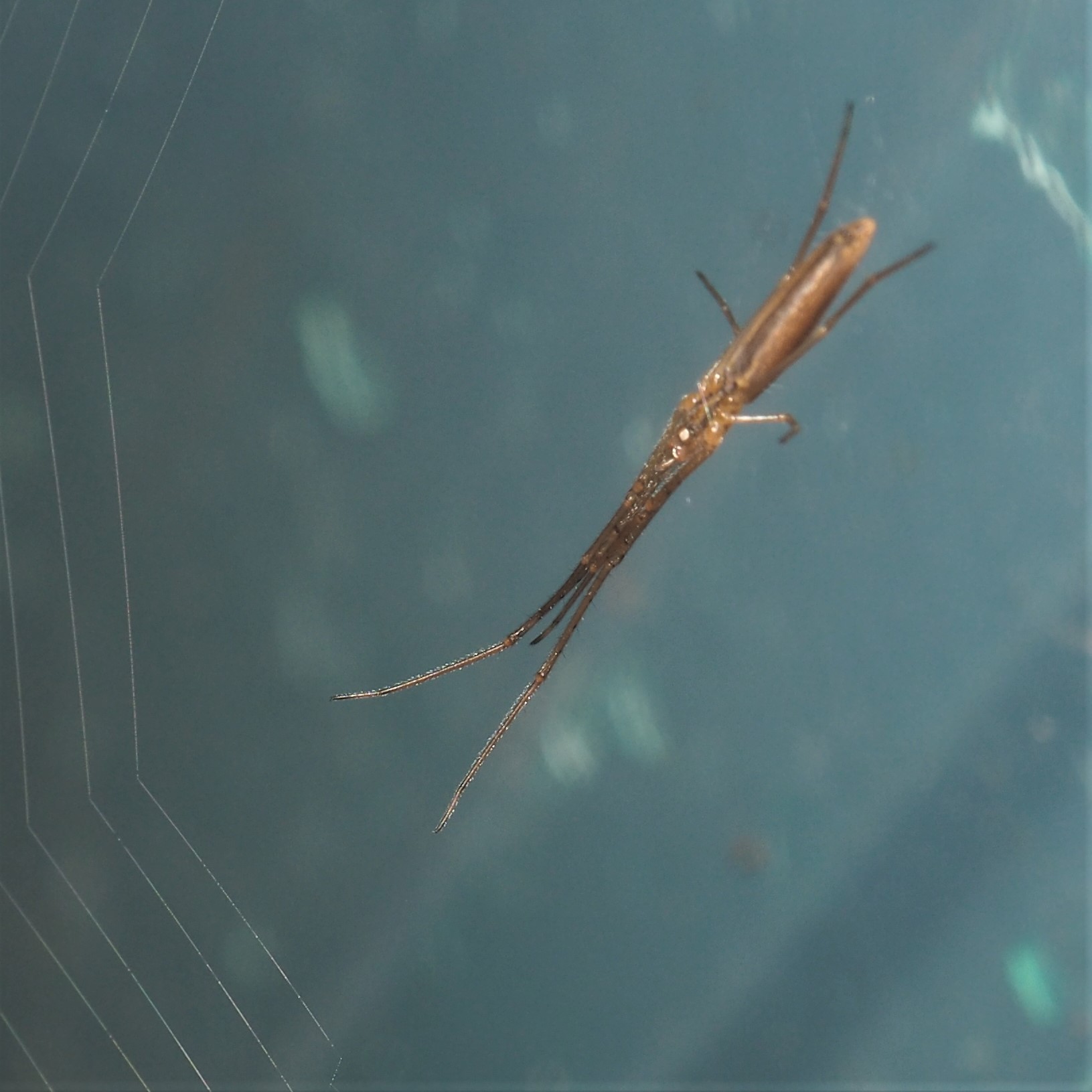
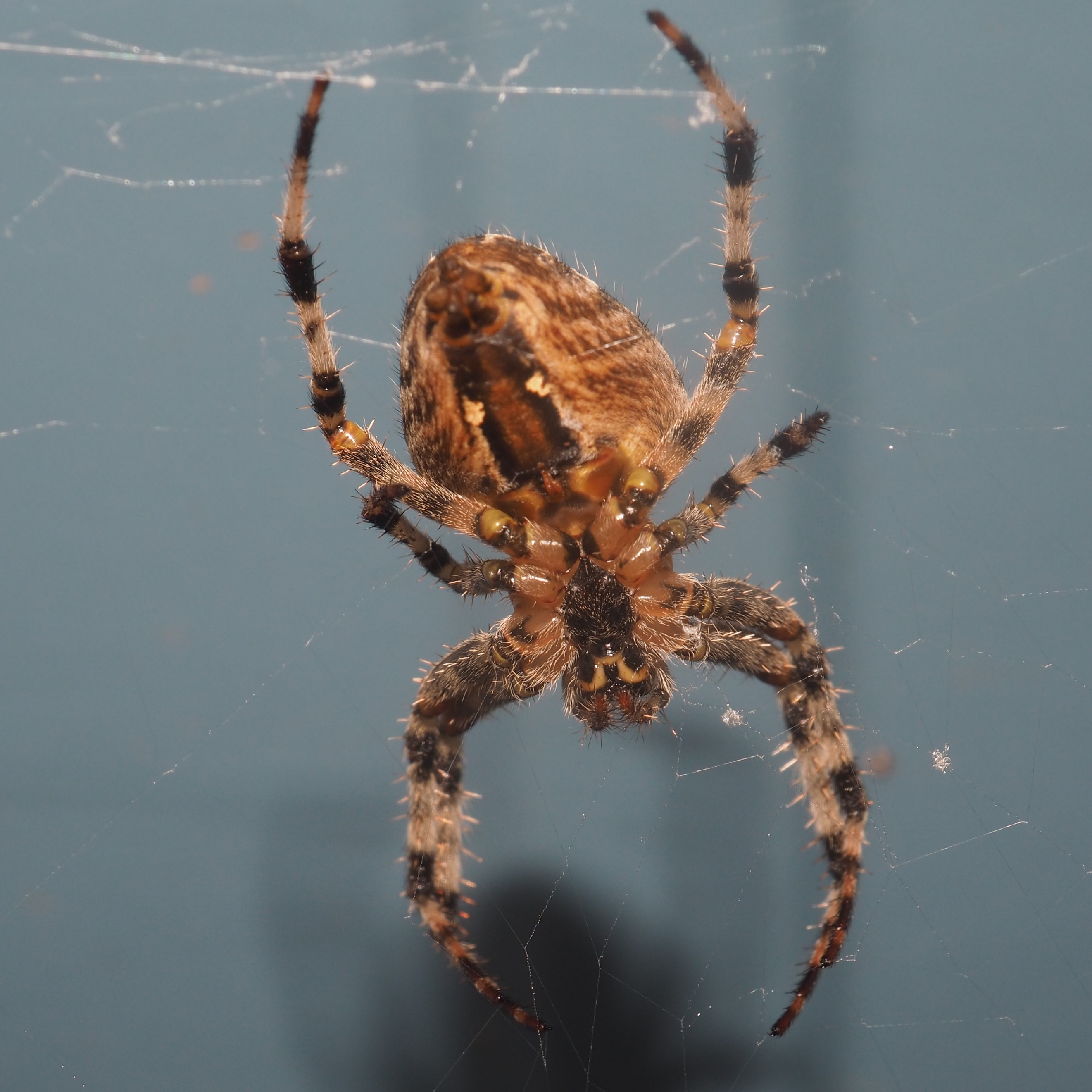
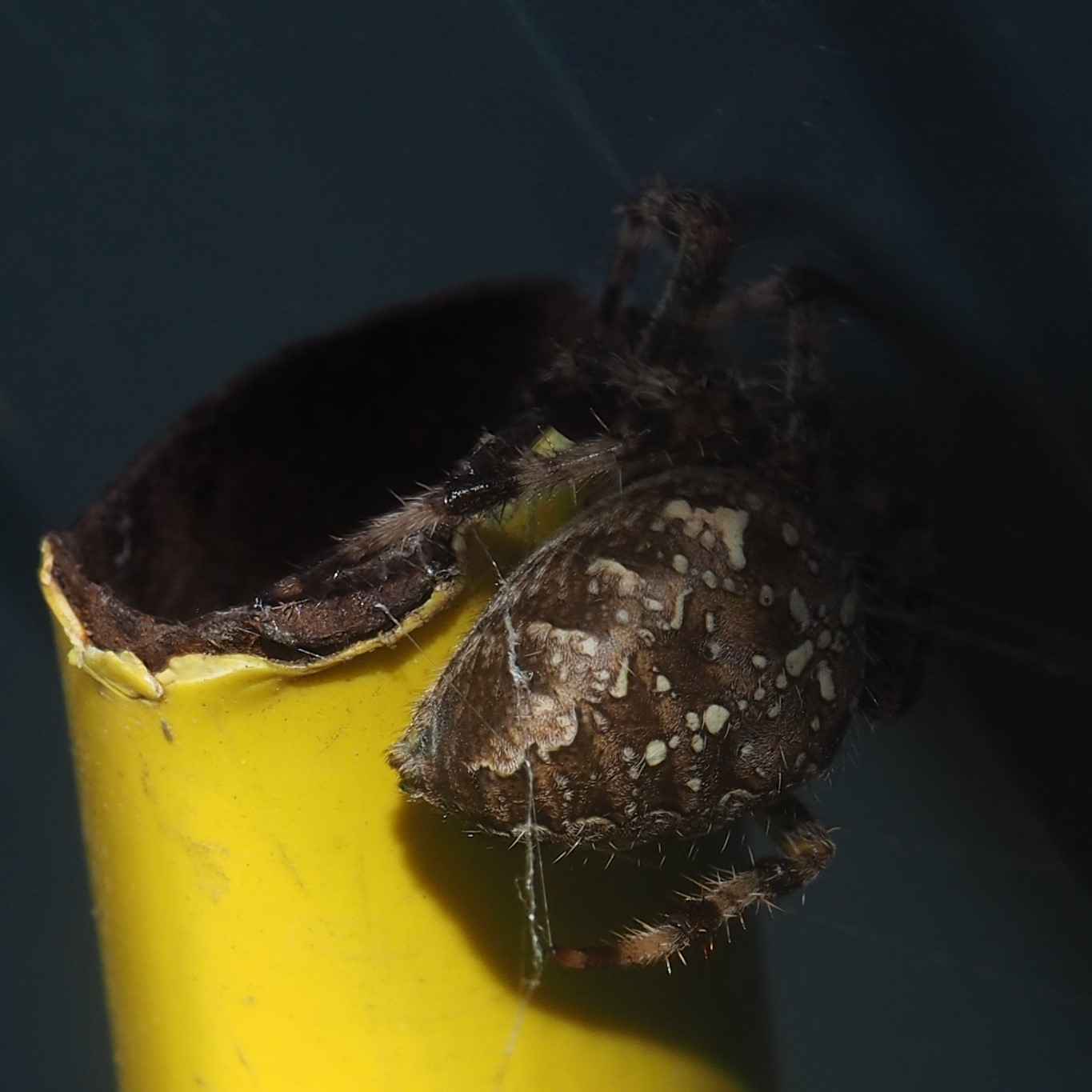
The Grass Spiders are quite large now. This one has left its plant-based nest and is running along the shop siding. Second is a mystery. This little crab spider was gently walking down the surface of this pink aster bloom. Remember that what looks like legs is actually arms. Does that make sense? Its head is the lower of the two big body pieces, and those black buttons are actually its eyes.

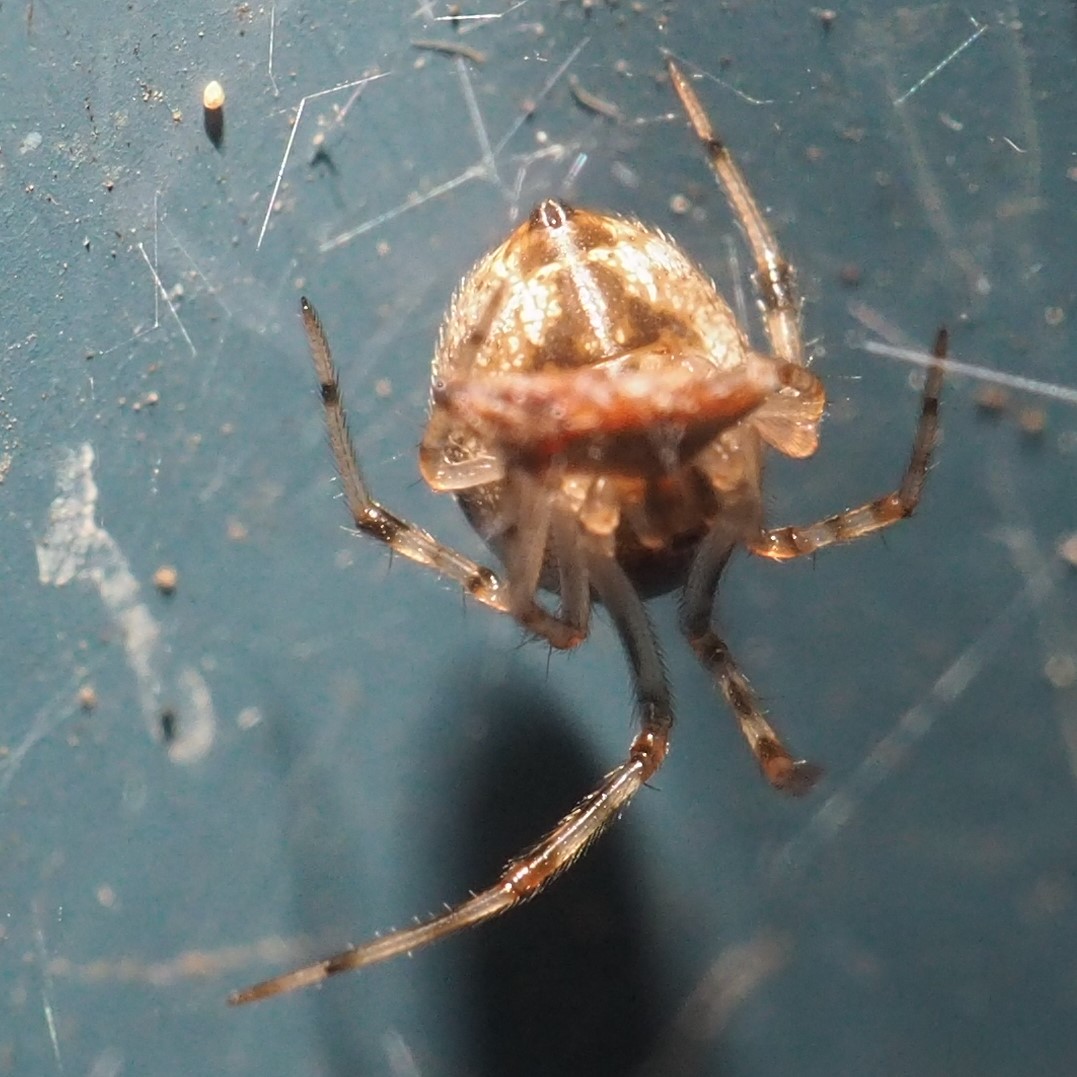
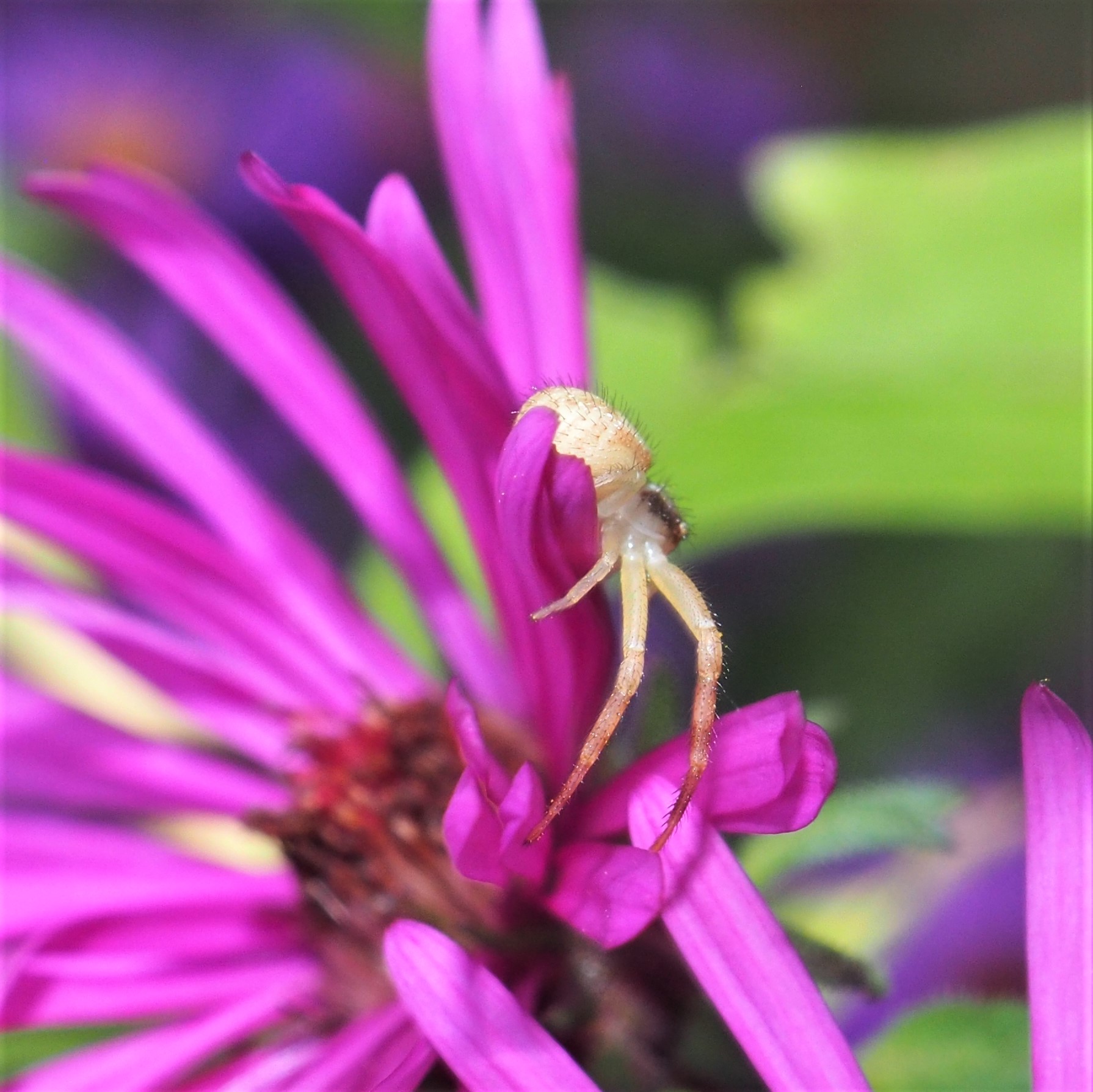
This wasp is an Ichneumonid. Even though you can't see any ovipositor, that's all right - this one must be a male. I'm calling this an Ichneumonid Wasp because I've seen those white-splotched antennae before. The second one is also an Ichneumonid Wasp.
Maybe this is an optical illusion, but doesn't it seem to be crossing its back two left legs?
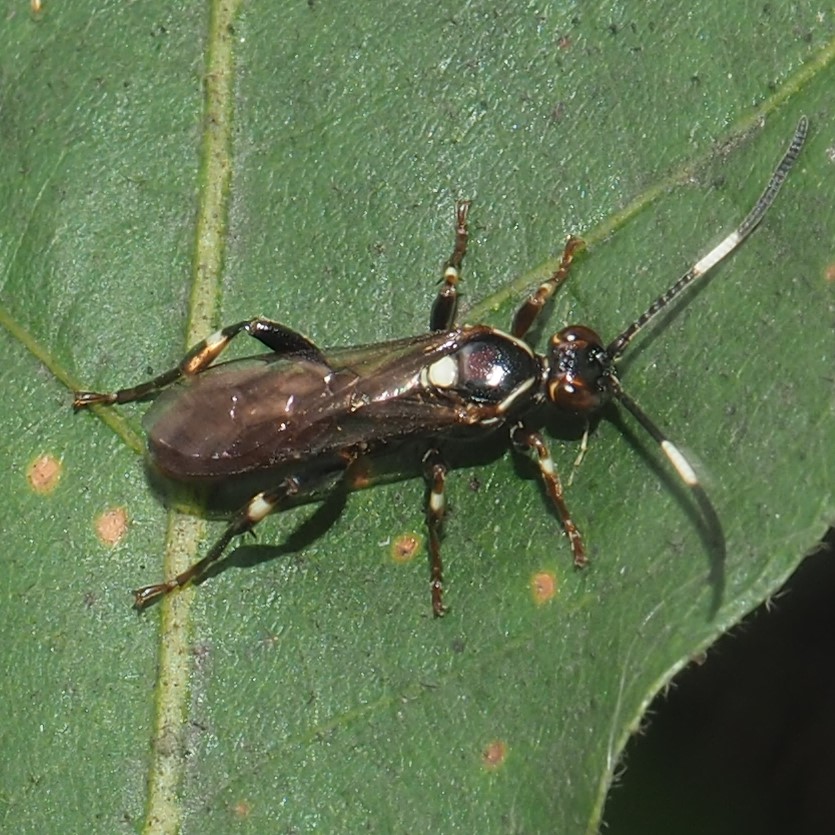
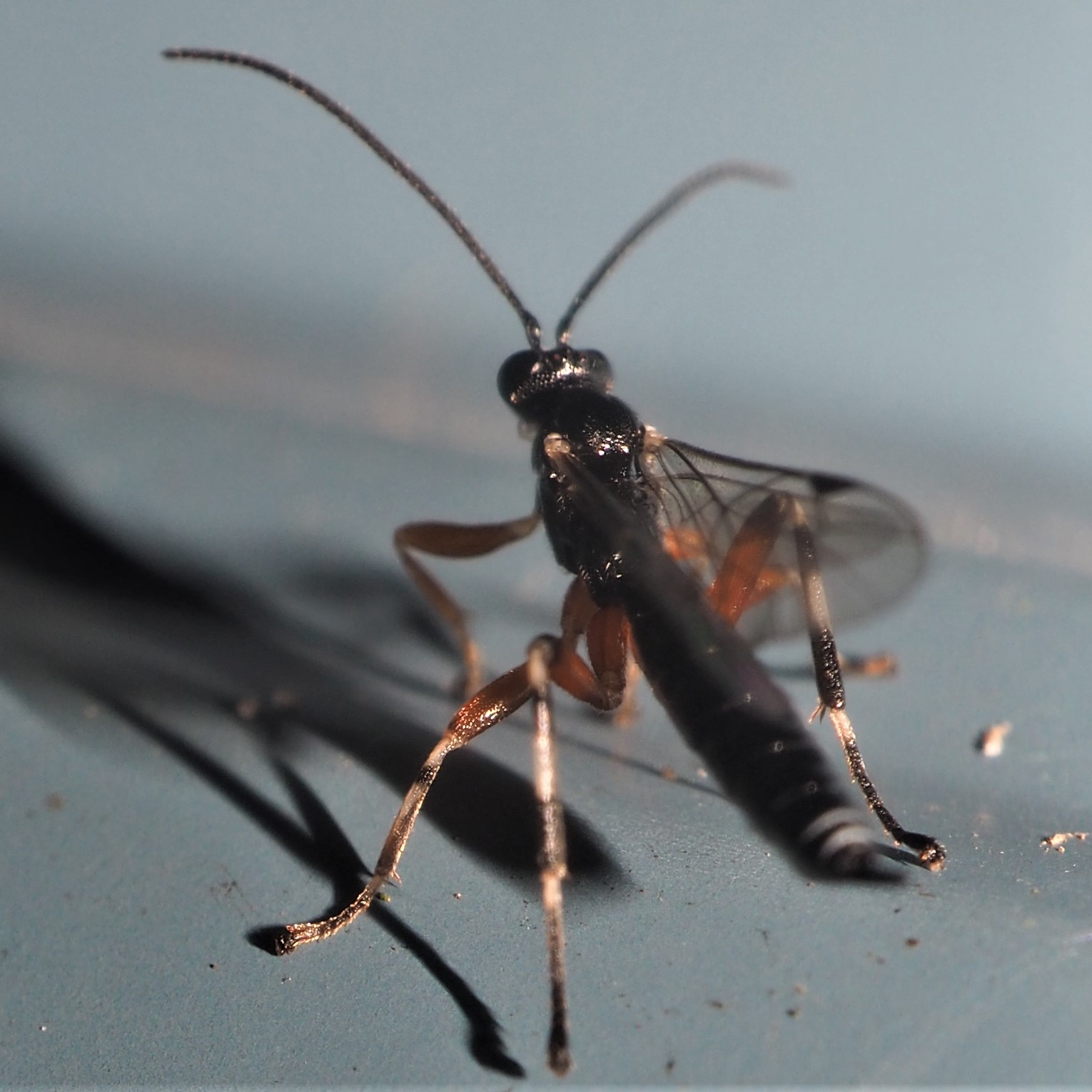
This tiny wasp - I've no clue what it is. But it was moving very fast. This seems to be the end of the Wasps.
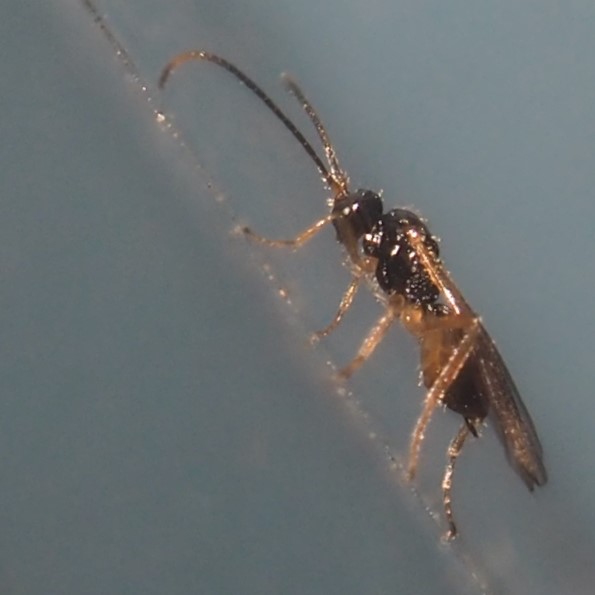

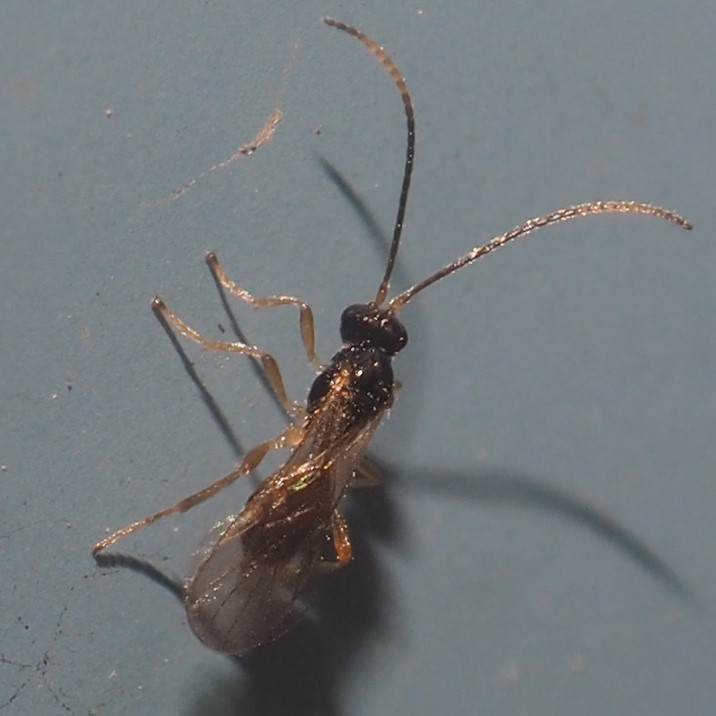
This wasp in the Goldenrod seems to be hunting for something. Aha! Maybe this nice Redbud Bruchid? The third image shows on the far bottom right a Spotted Cucumber Beetle, who doesn't seem to know how lucky it is.
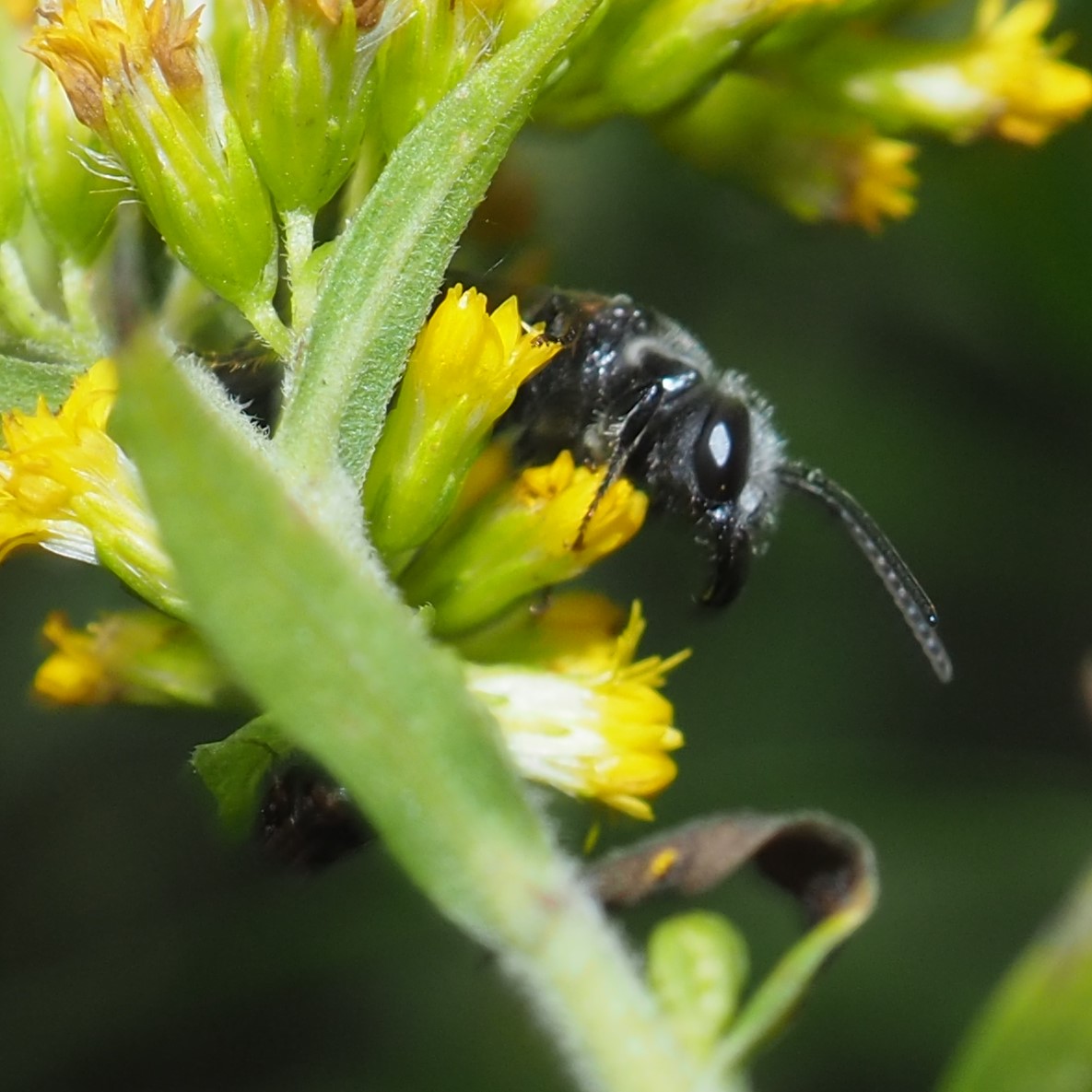
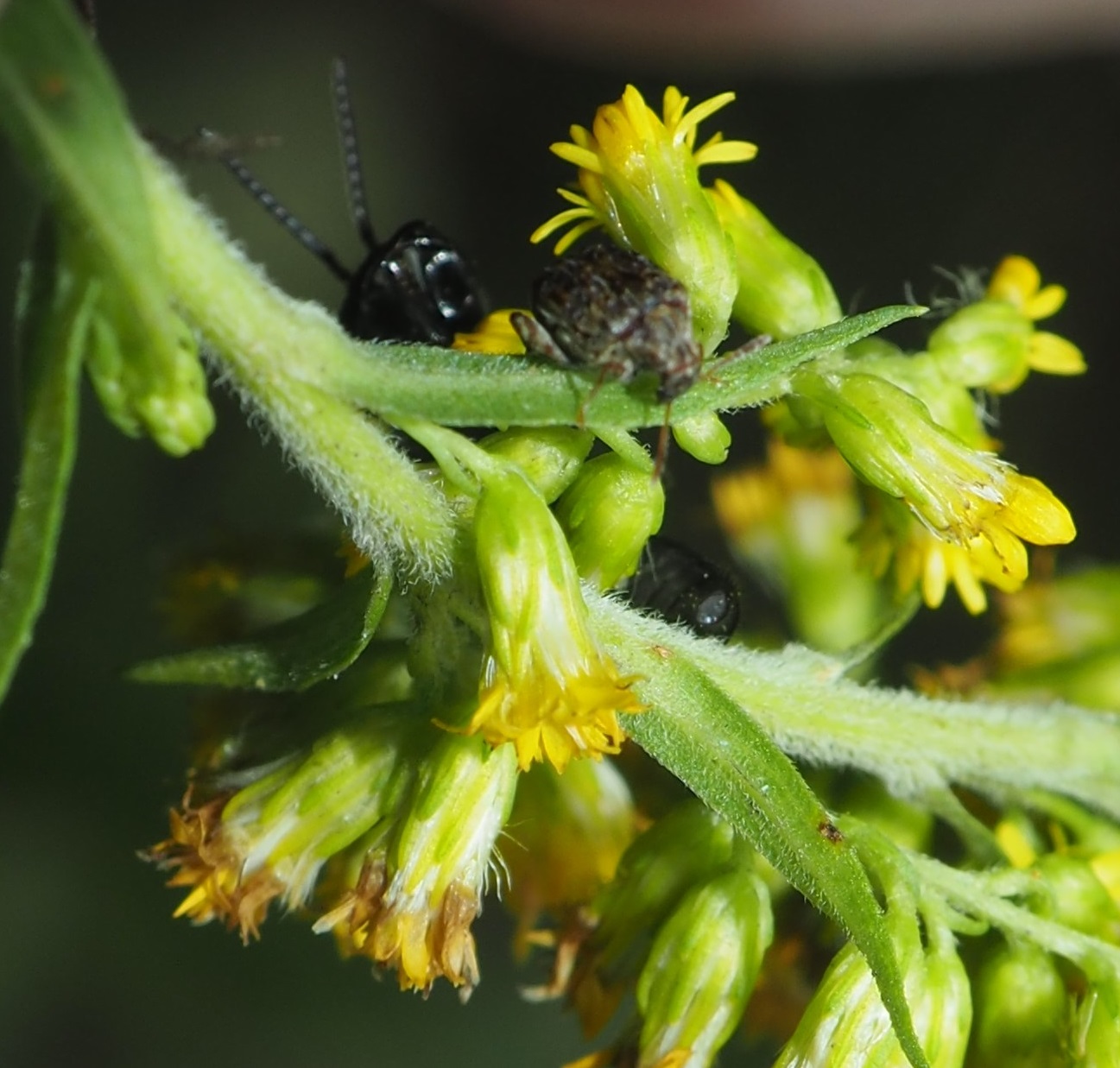
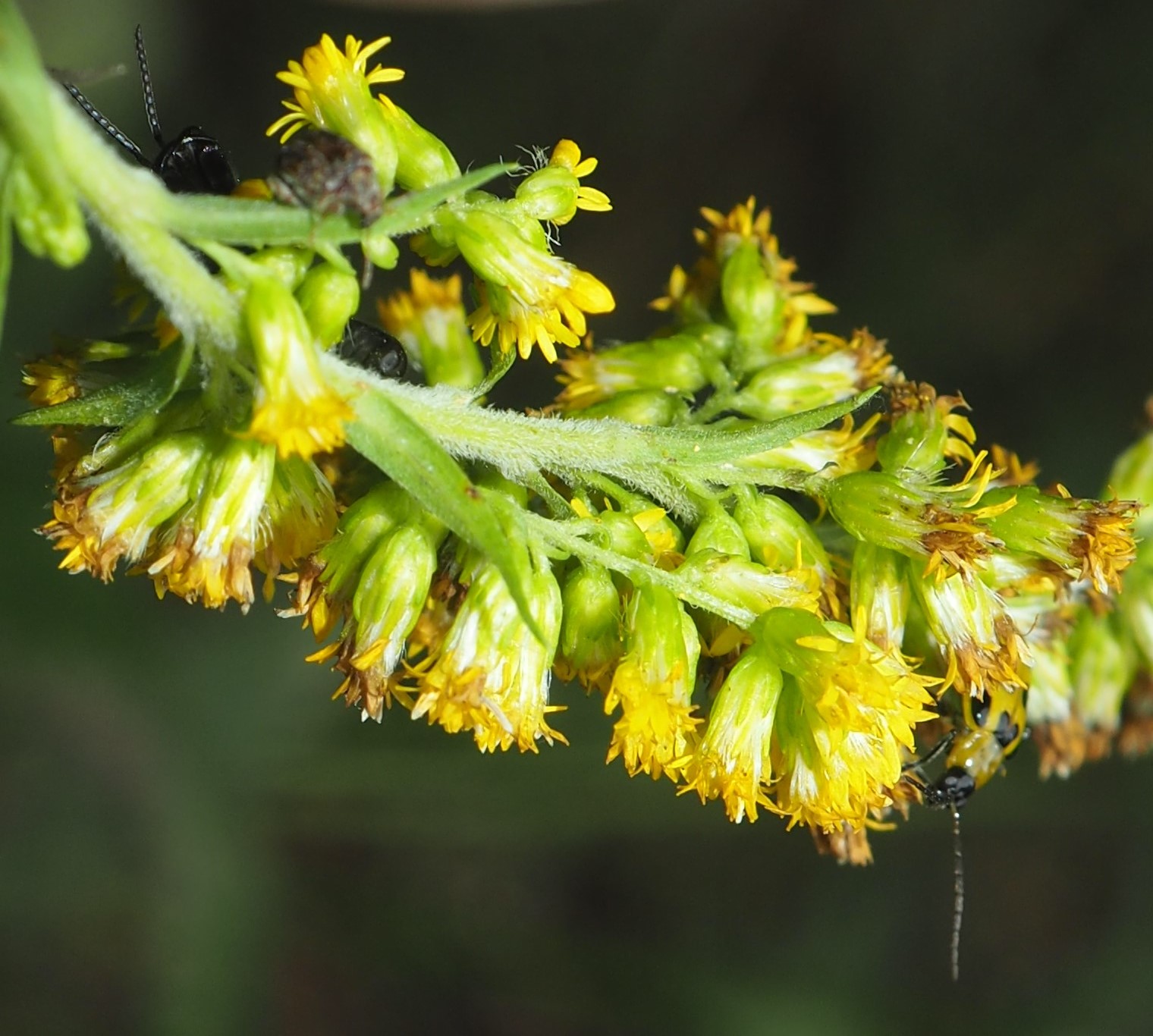
Maybe it's the afternoon light, but this Water Lily seems more evenly pink than it used to. The third one was shot on a cloudy day.


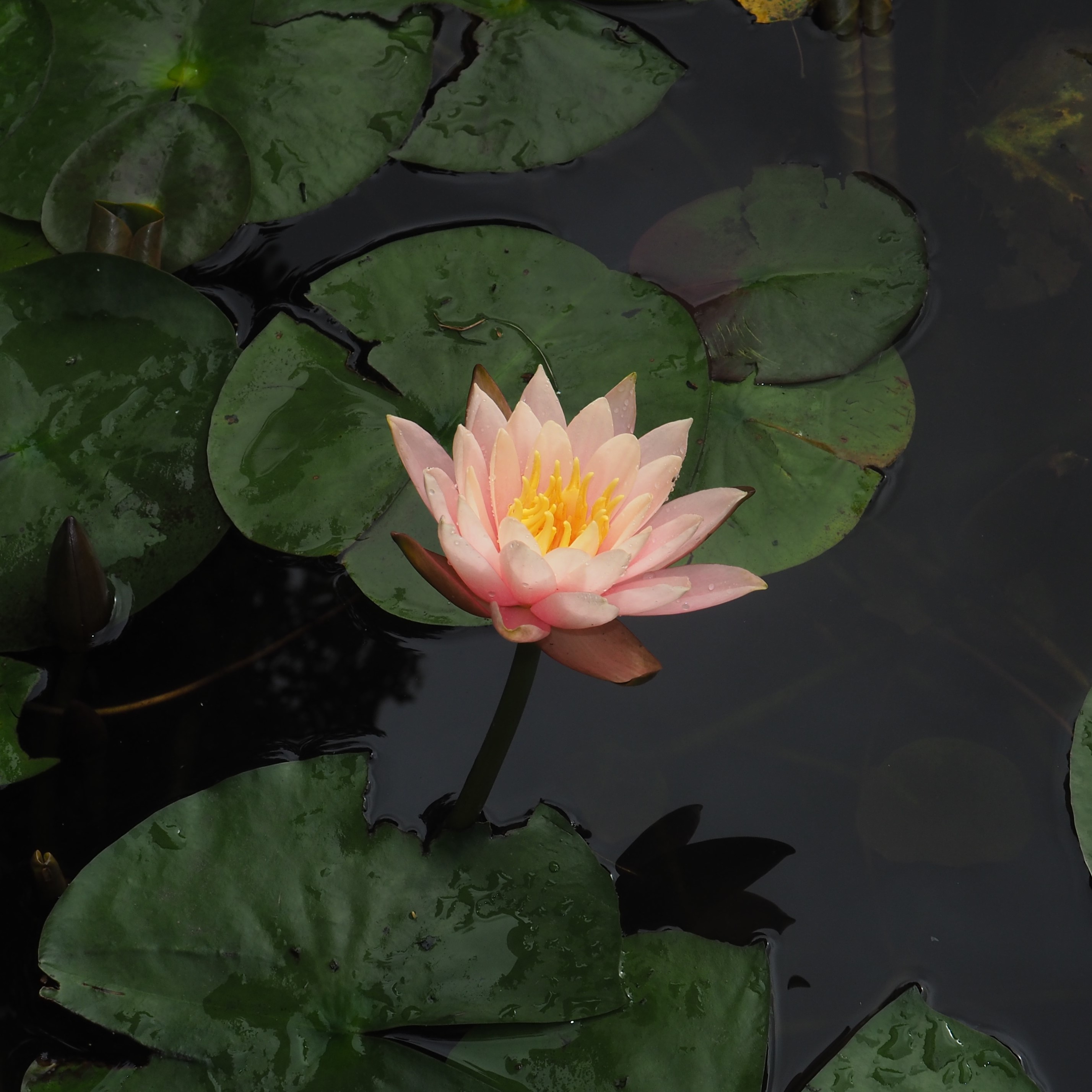
Hard to imagine but that seems to be about it. I think we had quite a lot fewer items for this Creature Feature than usual. Anyway, the weather will certainly change back and forth often in the months to come. And so I suppose we all should be prepared to do the same. Hang in there in the meantime. I'd love to hear from you old friends. I'll just delete all the political mail items and talk to you instead!
Love, Martha
Back to September 29, 2019
Forward to October 13, 2019
Back to main menu
copyright Martha O'Kennon 2019






















































































